Presentation Slides
Chinese Medicine Research Hub
Review Article
Pomegranate extract could potentially benefit women's reproductive health, enhance fertility, regulate menstrual cycles, support pregnancy, and help treat polycystic ovary syndrome.
2024 Life Therapeutic Potential of Pomegranate Extract for Women’s Reproductive Health and Breast Cancer
Jang JY, Kim D, Im E, Kim ND
Chinese Medicine Research Hub
Cohort Study
Higher consumption of ultra-processed food by pregnant women was linked to an increased risk of infantile atopic dermatitis within the first year of life.
2024 Nutrition Journal Association of maternal ultra-processed food consumption during pregnancy with atopic dermatitis in infancy: Korean Mothers and Children’s Environmental Health (MOCEH) study
Jang W, Kim M, Ha E, Kim H
Chinese Medicine Research Hub
Systematic Review
Increased omega-3 intake significantly improves women's chances of pregnancy and fertilization rates.
2024 Heliyon Effect of omega-3 supplements or diets on fertility in women: A meta-analysis
Trop-Steinberg S, Gal M, Azar Y, Kilav-Levin R, Heifetz EM
Chinese Medicine Research Hub
Systematic Review
Acupuncture may have a positive impact on clinical pregnancy rate and live birth rate in women undergoing in vitro fertilization (IVF), although the results are limited by the heterogeneity of the current evidence.
2023 Chinese Journal of Integrative Medicine Pregnancy Benefit of Acupuncture on in vitro Fertilization: A Systematic Review and Meta-Analysis
Zhang H, Zhang C, Ma P, Sun C, Sun C, Liu X, Pu Z, Lin Y, Liu B, Liu C, Yan S
Chinese Medicine Research Hub
Review Article
The Mediterranean diet and reduced intake of trans fatty acids, saturated fatty acids, and discretionary foods like fast food and sugar-sweetened beverages may improve fertility rates.
2023 Human Reproduction Update Assessing the influence of preconception diet on female fertility: a systematic scoping review of observational studies
Alesi S, Habibi N, Silva TR, Cheung N, Torkel S, Tay CT, Quinteros A, Winter H, Teede H, Mousa A, Grieger JA, Moran LJ
Chinese Medicine Research Hub
Review Article
Moderate consumption of beer, due to its melatonin content, can beneficially contribute to healthy diets and improve quality of life in certain physiological conditions.
2022 Journal of the Science of Food and Agriculture The melatonin contained in beer can provide health benefits, due to its antioxidant, anti‐inflammatory and immunomodulatory properties
Maldonado MD, Romero‐Aibar J, Calvo JR
Chinese Medicine Research Hub
Systematic Review
The study found that acupuncture as an adjuvant therapy for frozen-thawed embryo transfer (FET) in infertile women had positive effects on pregnancy outcomes.
2022 Frontiers in Public Health Effects of acupuncture on the pregnancy outcomes of frozen-thawed embryo transfer: A systematic review and meta-analysis
Zhu C, Xia W, Huang J, Zhang X, Li F, Yu X, Ma J, Zeng Q
Chinese Medicine Research Hub
Systematic Review
PCOS patients suggests that combining acupuncture with metformin might enhance pregnancy and ovulation rates, as well as improve insulin resistance.
2022 Frontiers in Endocrinology Acupuncture combined with metformin versus metformin alone to improve pregnancy rate in polycystic ovary syndrome: A systematic review and meta-analysis
Chen X, Lan Y, Yang L, Liu Y, Li H, Zhu X, Zhao Y, Long C, Wang M, Xie Q, Li Z, Wu J
Chinese Medicine Research Hub
Systematic Review
Aromatherapy, specifically lavender, appears to be an effective, affordable, and holistic approach to reducing the length of labour in expectant women.
2022 Journal of Obstetrics and Gynaecology Effectiveness of aromatherapy in reducing duration of labour: a systematic review
Ghiasi A, Bagheri L, Sharaflari F
Chinese Medicine Research Hub
Randomised Controlled Trial
Honey, combined with Iron (Fe), effectively enhances hemoglobin levels and reduces oxidative stress markers in anemic expectant mothers.
2022 Journal of Asian Multicultural Research for Medical and Health Science Study Effect of Honey to Levels Hemoglobin and Levels of 8-Hydroxy-2-Deoxyguanosin (8-Ohdg) in Pregnant Women with Anemia
A A, Astuti A, Leli L, Saad R
Chinese Medicine Research Hub
Systematic Review
Among patients with PCOS, the combined use of acupuncture and moxibustion as a complementary therapy has additional efficacy regarding increased pregnancy and ovulation rates and reduced miscarriage rate.
2022 Evidence-Based Complementary and Alternative Medicine Effects of Acupuncture Combined with Moxibustion on Reproductive and Metabolic Outcomes in Patients with Polycystic Ovary Syndrome: A Systematic Review and Meta-Analysis
Li P, Peng J, Ding Z, Zhou X, Liang R
Chinese Medicine Research Hub
Systematic Review
Among the mentioned plants, castor oil and date fruit have more evidence in cervical ripening and onset of labor.
2022 Journal of Isfahan Medical School The Effect of Outpatient Herbal Drugs on Cervical Ripening and Onset of Labor: A Systematic Review and Meta-Analysis
Ghasemi M, Ebrahimzadeh-Zagami S, Ghavami V.
Chinese Medicine Research Hub
Systematic Review
Edible medicinal plants like saffron, chamomile, dill seeds, and castor oil have demonstrated positive effects on various aspects of labor, indicating potential natural alternatives for aiding childbirth.
2022 Current Drug Discovery Technologies Edible Medicinal Plants on Facilitating Childbirth: A Systematic Review
Ivari FR, Vatanchi AM, Yousefi M, Badaksh F, Salari R
Chinese Medicine Research Hub
Systematic Review
Date fruit consumption several weeks prior to delivery can decrease the need for labor induction and/or augmentation and might have a beneficial effect on labor duration.
2021 Explore: The Journal of Science & Healing The effect of late pregnancy date fruit consumption on delivery progress – A meta-analysis
Sagi-Dain L, Sagi S
Chinese Medicine Research Hub
Review Article
Lavender aromatherapy, whether administered through massage or inhalation, appears effective in reducing active phase labor pain.
2021 Disease and Diagnosis Effect of Aromatherapy with Lavender on Labor Pain: A Literature Review
Hatami Rad R
Chinese Medicine Research Hub
Review Article
The date palm enhances both male and female fertility parameters through its nutritional attributes and antioxidant functionality.
2021 Metabolites Therapeutic Potential of Date Palm against Human Infertility: A Review
Shehzad M, Rasheed H, Naqvi SA, Al-Khayri JM, Lorenzo JM, Alaghbari MA, Manzoor MF, Aadil RM
Chinese Medicine Research Hub
Systematic Review
The addition of CHM to clomiphene may improve pregnancy rates.
2021 Cochrane Database of Systematic Reviews Chinese herbal medicine for subfertile women with polycystic ovarian syndrome
Zhou K, Zhang J, Xu L, Lim CED
Chinese Medicine Research Hub
Systematic Review
A total of 18 publications were included, all indicating improved PCOS symptoms with Chinese medicine compared to control groups.
2021 Evidence-Based Complementary and Alternative Medicine An Overview of Systematic Reviews of Using Chinese Medicine to Treat Polycystic Ovary Syndrome
Wang L, Liang R, Tang Q, Zhu L
Chinese Medicine Research Hub
Systematic Review
Acupuncture alone or traditional Chinese medicines (taken orally) in combination with western medicine significantly increased the pregnancy rate of PCOS patients and CAM was more effective than western medicine alone for improving hormone levels.
2021 Evidence-Based Complementary and Alternative Medicine Complementary and Alternative Medicine for the Treatment of Abnormal Endometrial Conditions in Women with PCOS: A Systematic Review and Meta-Analysis of Randomized Controlled Trials
Jiayu Hu, Wenhua Shi, Jiayue Xu, Shaoxuan Liu, Siya Hu, Wenjing Fu, Jing Wang and Fengjuan Han
Chinese Medicine Research Hub
Systematic Review
Black cohosh indicated potential benefits in hormone regulation and endometrial thickness, alongside safety in short-term use.
2021 Journal of Pharmacy Practice Systematic Review of Black Cohosh (Cimicifuga racemosa) for Management of Polycystic Ovary Syndrome-Related Infertility
Fan CW, Cieri-Hutcherson NE, Hutcherson TC
Chinese Medicine Research Hub
Systematic Review
Based on the current evidence, acupuncture appears to be beneficial to increase the clinical pregnancy rate in women undergoing in vitro fertilization and embryo transfer.
2021 Frontiers in Public Health An Overview of Systematic Reviews of Acupuncture for Infertile Women Undergoing in vitro Fertilization and Embryo Transfer
Wang X, Wang Y, Wei S, He B, Cao Y, Zhang N, Li M
Chinese Medicine Research Hub
Systematic Review
Raspberry leaf for childbirth, highlighting the lack of robust evidence on its effects, safety, and efficacy during pregnancy, emphasizing the need for more comprehensive research.
2021 BMC Complementary Medicine and Therapies Biophysical effects, safety and efficacy of raspberry leaf use in pregnancy: a systematic integrative review
Bowman R, Taylor J, Muggleton S, Davis D
Chinese Medicine Research Hub
Systematic Review
Acupuncture therapy on patients with recurrent implantation failure can improve the pregnancy outcome of patients. It is a relatively effective treatment with satisfactory safety and suitable for clinical application.
2021 Evidence-Based Complementary and Alternative Medicine The Effects of Acupuncture on Pregnancy Outcomes of Recurrent Implantation Failure: A Systematic Review and Meta-Analysis
Li, M., Liu, Y., Wang, H., Zheng, S., Deng, Y., & Li, Y.
Chinese Medicine Research Hub
Systematic Review
Acupuncture may have a positive effect on anxiety relief during IVF treatment, while its effect on depression relief is inconclusive.
2021 European Journal of Integrative Medicine Effects of acupuncture on the relief of anxiety and/or depression during in vitro fertilization: A systematic review and meta-analysis
Ye JY, He YJ, Zhan MJ, Qu F
Chinese Medicine Research Hub
Systematic Review
Endometriosis and Adenomyosis can have impact on miscarriage risk in pregnancy.
2020 BioMed Research International Miscarriage on Endometriosis and Adenomyosis in Women by Assisted Reproductive Technology or with Spontaneous Conception: A Systematic Review and Meta-Analysis
Yangxue Huang, Xianhong Zhao, Yiyuan Chen, Jie Wang, Weilin Zheng, Lixing Cao
Chinese Medicine Research Hub
Systematic Review
Compared with western medicine, acupuncture significantly increased the pregnancy and ovulation rates, as well as reducing the rate of miscarriages among Chinese women with infertility.
2020 European Journal of Integrative Medicine Effectiveness of different acupuncture for infertility: Overview of systematic reviews and network meta-analysis
Zhang, J., He, Y., Liu, Y., Huang, X., & Yu, H.
Chinese Medicine Research Hub
Systematic Review
Clinical trials categorize botanical parts of date palm as being most effective in eight different areas such as obstetrics, oncology, and endocrinology.
2020 Complementary Therapies in Medicine Clinical effects of date palm (Phoenix dactylifera L.): A systematic review on clinical trials
Bagherzadeh karimi A, Elmi A, Zargaran A, Mirghafourvand M, Fazljou SMB, araj-Khodaei M, Baghervand Navid R
Chinese Medicine Research Hub
Systematic Review
Acupuncture could promote the recovery of menstrual cycles as well as downregulate the levels of LH and testosterone in patients with PCOS.
2020 Medicine Effectiveness of acupuncture in polycystic ovary syndrome
Wu J, Chen D, Liu N
Chinese Medicine Research Hub
Randomised Controlled Trial
Acupuncture was shown to significantly improve the sleep quality in pregnant women, possibly through increasing melatonin secretion.
2020 Nature and Science of Sleep Effect of Acupuncture on Pregnancy-Related Insomnia and Melatonin: A Single-Blinded, Randomized, Placebo-Controlled Trial
Foroughinia S, Hessami K, Asadi N, Foroughinia L, Hadianfard M, Hajihosseini A, Pirasteh N, Vossoughi M, Vafaei H, Faraji A, Kasraeian M, Doroudchi M, Rafiee Monjezi M, Roozmeh S, Bazrafshan K.
Chinese Medicine Research Hub
Systematic Review
Aromatherapy, specifically with lavender essential oil, can effectively alleviate maternal anxiety and labor pain.
2020 Ethiopian Journal of Health Sciences The Effectiveness of Aromatherapy in the Management of Labor Pain and Anxiety: A Systematic Review
Mahbubeh Tabatabaeichehr , Hamed Mortazavi
Chinese Medicine Research Hub
Systematic Review
Ginger has been effective in a majority of studies, including those that examined the alleviation of nausea and vomiting of pregnancy, digestive function, improvement in the expression level of markers for colorectal cancer risk, and anti-inflammatory functions.
2020 Nutrients Ginger on Human Health: A Comprehensive Systematic Review of 109 Randomized Controlled Trials
Anh NH, Kim SJ, Long NP, Min JE, Yoon YC, Lee EG, Kim M, Kim TJ, Yang YY, Son EY, Yoon SJ, Diem NC, Kim HM, Kwon SW.
Chinese Medicine Research Hub
Review Article
Traditional Chinese medicine, especially Zuo Gui Wan, red raspberry leaves, and Orthosiphon stamineus, seems to control gestational diabetes effectively without reported toxicity.
2019 Journal of Diabetes Research Evaluating Traditional Chinese Medicine and Herbal Products for the Treatment of Gestational Diabetes Mellitus
Xu YXZ, Xi S, Qian X
Chinese Medicine Research Hub
Systematic Review
The use of acupuncture as a monotherapy significantly improved the rate of pregnancy among the study participants compared with the use of clomiphene citrate alone.
2019 Acupuncture in Medicine Acupuncture and clomiphene citrate for anovulatory infertility: a systematic review and meta-analysis
Gao R, Guo B, Bai J, Wu Y, Wu K
Chinese Medicine Research Hub
Systematic Review
Acupuncture appears to be beneficial to women with poor ovarian reserve or with previous unsuccessful attempts of in vitro fertilization with embryo transfer.
2019 Journal of Gynecology Obstetrics and Human Reproduction The effects of acupuncture on pregnancy outcomes of in vitro fertilization with embryo transfer: An interdisciplinary systematic review
Gu, Y.-E., Zhang, X., Zhang, Q., Dai, M.-C., Wu, Y., Zhou, Y., & Qu, F.
Chinese Medicine Research Hub
Cohort Study
Pregnant women's stature, BMI, sedentary lifestyle, as well as the regular consumption of certain foods, influence the formation and severity of striae gravidarum.
2019 Taiwanese Journal of Obstetrics and Gynecology Risk factors for the formation of striae gravidarum in women in Jiangsu Province of China
Ren P, Zhao W, Dai X, Wang X, Yu J, Yuan Y, Wu Y
Chinese Medicine Research Hub
Meta-Analysis
Aromatherapy significantly reduces labor pain and duration without impacting emergency caesarean section, membrane rupture, and the onset of spontaneous labor.
2019 Women and Birth Labour pain control by aromatherapy: A meta-analysis of randomised controlled trials
Chen SF, Wang CH, Chan PT, Chiang HW, Hu TM, Tam KW, Loh EW
Chinese Medicine Research Hub
Systematic Review
Acupuncture and its combined therapy may be effective for treating female infertility, however, the included studies are not robust enough to draw a firm conclusion.
2019 Medicine Acupuncture for infertile women without undergoing assisted reproductive techniques (ART)
Yun L, Liqun W, Shuqi Y, Chunxiao W, Liming L, Wei Y
Chinese Medicine Research Hub
Systematic Review
Our analysis finds a benefit of acupuncture for IVF outcomes in women with a history of unsuccessful IVF attempt, and number of acupuncture treatments is a potential influential factor.
2019 BMC Complementary Medicine and Therapies The effects of acupuncture on pregnancy outcomes of in vitro fertilization: a systematic review and meta-analysis
Xie Z, Peng Z, Yao B, Chen L, Mu Y, Cheng J, Li Q, Luo X, Yang P, Xia Y
Chinese Medicine Research Hub
Randomised Controlled Trial
Consuming walnuts can enhance sperm motility and morphology, potentially improving fertility in males with infertility issues.
2019 Current Developments in Nutrition Randomized Clinical Trial: Effect of Walnuts on Semen Parameters and Male Fertility (P18-042-19)
Robbins W, Kim H, Houman J, Lee GW
Chinese Medicine Research Hub
Systematic Review
Acupuncture shows promise in improving endometrial receptivity and fertility outcomes in infertile women, but further high-quality research is needed to establish its effectiveness definitively.
2019 BMC Complementary Medicine and Therapies Acupuncture in improving endometrial receptivity: a systematic review and meta-analysis
Zhong, Y., Zeng, F., Liu, W. et al.
Chinese Medicine Research Hub
Systematic Review
Acupuncture may have a significant effect on clinical pregnancy rates, independent of comparator group, when used in women who have had multiple previous IVF cycles, or where there was a low baseline pregnancy rate.
2019 Reproductive BioMedicine Online Acupuncture performed around the time of embryo transfer: a systematic review and meta-analysis
Smith, C. A., Armour, M., Shewamene, Z., Tan, H. Y., Norman, R. J., & Johnson, N. P.
Chinese Medicine Research Hub
Systematic Review
Acupuncture performed on the day of embryo transfer has a significant effect on embryo implantation, however, a negative one.
2018 JBRA Assisted Reproduction Does acupuncture the day of embryo transfer affect the clinical pregnancy rate? Systematic review and meta-analysis
Schwarze, J.-E., Ceroni, J. P., Ortega-Hrepich, C., Villa, S., Crosby, J., & Pommer, R.
Chinese Medicine Research Hub
Systematic Review
Acupuncture in postpartum depression was at least as effective as fluoxetine hydrochloride, supporting the notion that acupuncture may be a safe and effective option.
2018 British Journal of Midwifery Acupuncture versus antidepressants in the management of postpartum depression: A systematic review
Akari Komori, David Arthur, Samara Radford, Hsiewe Ying Tan, Li Zheng, Mira An, Rika Umeda, and Zhen Zheng
Chinese Medicine Research Hub
Systematic Review
Acupuncture appears to be effective for postpartum depression with respect to certain outcomes.
2018 Acupuncture in Medicine Effectiveness of Acupuncture in Postpartum Depression: A Systematic Review and Meta-Analysis
Li S, Zhong W, Peng W, Jiang G
Chinese Medicine Research Hub
Systematic Review
Acupuncture treatment is beneficial in vitro fertilization (IVF) or intracytoplasmic sperm injection (ICSI) for improving the clinical pregnancy, implantation, and live birth outcomes.
2018 European Journal of Integrative Medicine Effects of acupuncture during in vitro fertilization or intracytoplasmic sperm injection: An updated systematic review and meta-analysis
Zhang X, Lee MS, Smith CA, Robinson N, Zhou Y, Wu Y, Mao YY, Qu F
Chinese Medicine Research Hub
Systematic Review
Ginger emerges as a safe and effective treatment for nausea and vomiting in early pregnancy.
2018 Foods How Safe Is Ginger Rhizome for Decreasing Nausea and Vomiting in Women during Early Pregnancy?
Stanisiere J, Mousset PY, Lafay S
Chinese Medicine Research Hub
Systematic Review
Aromatherapy with lavender demonstrated effectiveness in reducing labor pain during childbirth.
2018 Journal of Obstetrics, Gynecology and Cancer Research An Update on the Effect of Massage and Inhalation Aromatherapy with Lavender on Labor Pain Relief: A Systematic Review and Meta-analysis
Mirzaiinajmabadi K, Makvandi S, Mirteimoori M, Sadeghi R, , , ,
Chinese Medicine Research Hub
Randomised Controlled Trial
Inhalation aromatherapy with Boswellia Carterii essential oil can significantly reduce labor pain intensity in nulliparous women.
2018 Nursing and Midwifery Studies The effects of inhalation aromatherapy with Boswellia carterii essential oil on the intensity of labor pain among nulliparous women
Esmaelzadeh-Saeieh S, Rahimzadeh M, Khosravi-Dehaghi N, Torkashvand S
Chinese Medicine Research Hub
Systematic Review
Acupuncture may increase the clinical pregnancy rate and ongoing pregnancy rate and decrease the risk of ovarian hyperstimulation syndrome in women with PCOS undergoing IVF or ICSI.
2017 Acupuncture in Medicine Effectiveness of Acupuncture in Women with Polycystic Ovarian Syndrome Undergoing in Vitro Fertilisation Or Intracytoplasmic Sperm Injection: A Systematic Review and Meta-Analysis
Jo J, Lee YJ
Chinese Medicine Research Hub
Systematic Review
Acupuncture improves the clinical pregnancy rate among women undergoing IVF and the IVF outcome results were significantly superior in the acupuncture group when acupuncture was conducted during controlled ovarian hyperstimulation.
2016 Archives of Gynecology and Obstetrics Therapeutic effect of acupuncture on the outcomes of in vitro fertilization: a systematic review and meta-analysis
Qian, Y., Xia, X.-R., Ochin, H., Huang, C., Gao, C., Gao, L., Cui, Y.-G., Liu, J.-Y., & Meng, Y.
Chinese Medicine Research Hub
Case Report
Raspberry leaf consumption may decrease insulin requirements in pregnant women with gestational diabetes mellitus.
2016 Obstetrics & Gynecology Raspberry Leaf and Hypoglycemia in Gestational Diabetes Mellitus
Cheang KI, Nguyen TT, Karjane NW, Salley KES
Chinese Medicine Research Hub
Systematic Review
Acupoint stimulation shows promise in alleviating nausea and vomiting in pregnancy.
2016 BMC Complementary Medicine and Therapies Effect of acustimulation on nausea and vomiting and on hyperemesis in pregnancy: a systematic review of Western and Chinese literature
Van den Heuvel, E., Goossens, M., Vanderhaegen, H. et al.
Chinese Medicine Research Hub
Systematic Review
There is moderate‐quality evidence from individual studies suggesting that acupuncture improved pelvic pain more than usual prenatal care.
2015 Cochrane Database of Systematic Reviews Interventions for preventing and treating low-back and pelvic pain during pregnancy
Liddle SD, Pennick V
Chinese Medicine Research Hub
Systematic Review
Our review suggests that management of female infertility with Chinese herbal medicine can improve pregnancy rates 2-fold within a 3-6 month period compared with Western medical fertility drug therapy.
2015 Complementary Therapies in Medicine Chinese herbal medicine for female infertility: an updated meta-analysis
Ried K.
Chinese Medicine Research Hub
Systematic Review
We found pooled benefit of acupuncture for IVF when performed at follicle phase and 25 min before and after embryo transfer, as well as 30 min after embryo transfer and implantation phase.
2015 Gynecologic and Obstetric Investigation The Role of Acupuncture in in vitro Fertilization: A Systematic Review and Meta-Analysis
Shen C.,Wu M., Shu D., Zhao X. and Gao Y.
Chinese Medicine Research Hub
Systematic Review
Acupuncture during pregnancy appears to be associated with few adverse events when correctly applied.
2014 Acupuncture in Medicine The Safety of Acupuncture during Pregnancy: A Systematic Review
Park J, Sohn Y, White AR, Lee H.
Chinese Medicine Research Hub
Systematic Review
Acupuncture showed both clinically important changes and statistically significant results for management of low back and/or pelvic pain (LBPP) in pregnancy.
2014 Journal of Advanced Nursing A systematic review investigating the effectiveness of Complementary and Alternative Medicine (CAM) for the management of low back and/or pelvic pain (LBPP) in pregnancy
Close C, Sinclair M, Liddle SD, Madden E, McCullough JE, Hughes C.
Chinese Medicine Research Hub
Systematic Review
Ginger could be considered a harmless and possibly effective alternative option for women suffering from nausea and vomiting during pregnancy.
2014 Nutrition Journal A systematic review and meta-analysis of the effect and safety of ginger in the treatment of pregnancy-associated nausea and vomiting
Viljoen, E., Visser, J., Koen, N. et al.
Chinese Medicine Research Hub
Systematic Review
Acupuncture's efficacy in treating gynecologic and obstetric disorders
2013 Medical Acupuncture Efficacy and Safety of Needle Acupuncture for Treating Gynecologic and Obstetric Disorders: An Overview
Selva Olid A, Martinez Zapata MJ, Sola I, Stojanovic Z, Uriona Tuma SM, Bonfill Cosp X.
Chinese Medicine Research Hub
Systematic Review
The meta-analysis indicates that while adjuvant acupuncture does not show a pooled benefit for in vitro fertilization (IVF) across all trials, it appears to have a more significant effect in trials with lower baseline pregnancy rates, warranting further investigation and confirmation in additional studies.
2013 Human Reproduction Update The effects of acupuncture on rates of clinical pregnancy among women undergoing in vitro fertilization: a systematic review and meta-analysis
Manheimer, E. ., van der Windt, D., Cheng, K., Stafford, K., Liu, J. ., Tierney, J., Lao, L. ., Berman, B. ., Langenberg, P., & Bouter, L.
Chinese Medicine Research Hub
Systematic Review
There is high-level evidence to support the use of acupuncture for treating major depressive disorder in pregnancy.
2013 Medical Acupuncture Acupuncture for Treating Anxiety and Depression in Women: A Clinical Systematic Review
Sniezek DP, Siddiqui IJ.
Chinese Medicine Research Hub
Systematic Review
The meta-analysis suggests that acupuncture does not provide significant benefits in improving the outcomes of in vitro fertilization (IVF) or intracytoplasmic sperm injection (ICSI) treatments.
2012 The Journal of Alternative and Complementary Medicine Effects of Acupuncture on the Outcomes of In Vitro Fertilization: A Systematic Review and Meta-Analysis
Qu, F., Zhou, J., & Ren, R.-X.
Chinese Medicine Research Hub
Complementary and alternative medicine (CAM) therapies have the potential to provide supportive care for women presenting with threatened miscarriage.
2012 BMC Complementary Medicine and Therapies Acupuncture as a therapeutic treatment option for threatened miscarriage
Betts D, Smith CA, Hannah DG.
Chinese Medicine Research Hub
Systematic Review
Acupuncture appears to improve clinical pregnancy rate and live birth rate in women undergoing in vitro fertilization, but the choice of control used in studies may influence the outcomes.
2012 Fertility and Sterility Effects of acupuncture on pregnancy rates in women undergoing in vitro fertilization: a systematic review and meta-analysis
Zheng, C. H., Huang, G. Y., Zhang, M. M., & Wang, W.
Executive Summary
Write an executive summary in the form of a blog article on the topic of "Research into Chinese medicine treatment for Pregnancy" summarising the research below and using language that can be easily understood by patients and avoiding medical jargon using a professional and caring tone of voice.
Write an executive summary in the form of a blog article on the topic of "Researched Chinese medicine treatments for Pregnancy" summarising the research below in an objective and easy to understand way, and using language that can be easily understood by patients. Group the article into Chinese medicine treatments first, followed by nutrition and other treatments. Avoid using medical jargon and use a professional and caring tone of voice.
Write me a concise but easy to understand executive summary on the topic of "Chinese medicine treatments for Pregnancy" based on the following research that I will give you. Your summary should be 2 paragraphs long in Australian English spelling and include references to the studies.
A Review Article published in 2024 in the journal Life found that Pomegranate extract could potentially benefit women's reproductive health, enhance fertility, regulate menstrual cycles, support pregnancy, and help treat polycystic ovary syndrome. In establishing the potential benefits of pomegranate extract in women's reproductive health, a wide array of methods was employed. Primarily, these included in vitro studies, animal modeling and certain clinical trials. Analyses of the antioxidant properties of the extract were done to ascertain its effectiveness in reducing oxidative stress and consequently, improving fertility. The influence of pomegranate extract on hormonal imbalances and menstrual regulation was also studied.
Discussions on the results emphasized the potential of pomegranate extract in supporting women's reproductive health. The extract was found beneficial in enhancing fertility, regulating menstruation and supporting pregnancy. Further, it could help in polycystic ovary syndrome therapy by improving insulin sensitivity and reducing oxidative damage. Its rich nutrient composition was appreciated for potentially fostering placental development and fetal growth, thus possibly mitigating the risk of early birth. Apart from reproductive health, some studies pointed towards pomegranate extract's potential anticancer properties, primarily against breast cancer.
A Cohort Study published in 2024 in the journal Nutrition Journal found that Higher consumption of ultra-processed food by pregnant women was linked to an increased risk of infantile atopic dermatitis within the first year of life. The research used 861 pairs of pregnant women and their offspring from the Mothers' and Children's Environmental Health project in Korea. These women’s dietary intake was measured using the 24-hour recall method during 12-28 weeks gestation. Foods were classified as ultra-processed following the NOVA classification and their consumption was calculated as the proportion of total energy intake, with participants categorized into quartiles. The prevalence of infantile atopic dermatitis was assessed based on their medical histories and according to the International Study of Asthma and Allergies in Childhood criteria.
The results revealed that children born to mothers in the highest quartile of ultra-processed food consumption, compared to the lowest quartile, showed a higher risk towards atopic dermatitis within 12 months. This relationship became stronger after adjusting for certain confounding variables. Additionally, the link stayed consistent even after adjusting based on the Korean Healthy Eating Index, which measures diet quality.
A Systematic Review published in 2024 in the journal Heliyon found that Increased omega-3 intake significantly improves women's chances of pregnancy and fertilization rates. The methodology involved retrieving articles from databases like PubMed, Clinical Trials, CINAHL/EBSCO, Medline Complete, and Cochrane Library, published up to April 2021 using keywords related to omega-3, fertilization, and pregnancy. The selection criteria included studies that reported female fertility occurring naturally or intracytoplasmic sperm injection techniques concurrent with omega-3 intake, excluding retrospective studies, studies featuring postmenopausal women, or those with unevenly matched research groups. A meta-analysis was conducted using the extracted odds ratios of clinical pregnancies and fertilization rates from each study.
The results, drawn from six fertility treatment-related trials with 1789 women, four trials with 2607 women who conceived naturally, and three further trials involving 1725 oocytes for fertility rates, consistently show the beneficial effects of omega-3. These findings, however, exhibited a high degree of heterogeneity, suggesting variable factors across the studies might have influenced the outcomes.
A Systematic Review published in 2023 in the journal Chinese Journal of Integrative Medicine found that Acupuncture may have a positive impact on clinical pregnancy rate and live birth rate in women undergoing in vitro fertilization (IVF), although the results are limited by the heterogeneity of the current evidence. This study aimed to assess the efficacy of acupuncture on embryo transfer in women undergoing in vitro fertilization (IVF). A total of 49 randomized controlled trials (RCTs) involving 9422 women were analyzed. The results indicated that acupuncture had a significant positive impact on the clinical pregnancy rate (CPR) and live birth rate (LBR) compared to the control groups (odds ratio [OR]=1.65 for CPR, 1.34 for LBR). Subgroup analyses showed that traditional acupuncture was more beneficial for women aged < 35 years, those receiving ≥ 3 sessions, and those with lower baseline CPR rates in the control group. However, significant heterogeneity was observed among the studies. In conclusion, while there were some benefits of acupuncture in improving CPR and LBR in IVF, the results should be interpreted with caution due to the variability in the current evidence.
A Review Article published in 2023 in the journal Human Reproduction Update found that The Mediterranean diet and reduced intake of trans fatty acids, saturated fatty acids, and discretionary foods like fast food and sugar-sweetened beverages may improve fertility rates. This title represents a systematic scoping review of four electronic databases, namely Medline and EMBASE via Ovid Processing, CAB Direct, and CINAHL via EBSCO. The researchers included observational works, consisting of prospective and retrospective cohort, cross-sectional, and case-control studies, up to September 27, 2021. The criteria for study inclusion were women of reproductive age in the preconception stage who were examined for the connection between preconception diet and fertility outcomes.
From the total of 36 studies that were found eligible for review, the one diet that stood out with the most significant and consistent association with increased clinical pregnancy rates was the Mediterranean diet. Dietary factors such as reducing trans fatty acids, saturated fatty acids, and discretionary food intake, which includes fast food and sugar-rich drinks, were found to lead to an improvement in live birth, clinical pregnancy rates, and associated ART outcomes. However, this study also found that elements like seafood, dairy, and soy showed varying findings across a few studies. Despite the mixed results, it was noted that following some of these dietary regulations, notably Mediterranean diet, shows consistency with healthy eating guidelines, implying potential benefits in fertility.
A Review Article published in 2022 in the journal Journal of the Science of Food and Agriculture found that Moderate consumption of beer, due to its melatonin content, can beneficially contribute to healthy diets and improve quality of life in certain physiological conditions. The methodology of the study primarily involved a comprehensive review of data, partially acquired from a MEDLINE/PubMed search spanning nearly five decades, from 1975 to April 2022. Supplementary data was also sourced from personal experiences and previously published studies about melatonin, the immune system, and beer. The aim was to examine the generation mechanisms of melatonin in beer, its concentrations, and potential impacts on health.
In discussing the results, the study highlighted the rich melatonin content of beer and its echoes in potent antioxidant, oncostatic, immunomodulatory, and cytoprotective properties. Diving further into the beneficial aspects of beer consumption, the study found that the melatonin content of beer, when consumed moderately, could serve as a protective factor. This was particularly applicable in certain scenarios such as a on healthy diet, during pregnancy, menopause and in old age. The paper strongly suggests that moderate beer consumption can enhance the quality of life.
A Systematic Review published in 2022 in the journal Frontiers in Public Health found that The study found that acupuncture as an adjuvant therapy for frozen-thawed embryo transfer (FET) in infertile women had positive effects on pregnancy outcomes. The study investigates the effects of acupuncture as supplementary therapy for frozen-thawed embryo transfer (FET) in infertile women. It finds significant positive impacts on clinical pregnancy rate, biochemical pregnancy rate, endometrial thickness, and pattern. However, the evidence quality is considered unsatisfactory, prompting a call for more robust research and refined acupuncture protocols.
A Systematic Review published in 2022 in the journal Frontiers in Endocrinology found that PCOS patients suggests that combining acupuncture with metformin might enhance pregnancy and ovulation rates, as well as improve insulin resistance. The study initially screened 330 relevant articles, eventually including nine randomized controlled trials (RCTs) that met the inclusion criteria. These trials encompassed 1,159 patients with PCOS who underwent acupuncture or acupuncture combined with metformin treatment. Using the GRADE method, a "Summary of Findings" table was employed to evaluate the quality of evidence for various outcome measures. The main results indicated that acupuncture combined with metformin exhibited superiority over metformin alone in terms of pregnancy rate, ovulation rate, and HOMA-IR (insulin resistance). Subgroup analysis highlighted that diagnostic criteria and random methods contributed to heterogeneity in results.
However, the evidence's quality was predominantly low or very low due to study limitations, inconsistencies, and imprecisions. The intervention measures, such as acupuncture methods and treatment parameters, varied substantially among studies. Challenges in contacting original authors and incomplete information posed further limitations. The study suggested potential improvements in pregnancy rate, ovulation rate, and HOMA-IR with acupuncture combined with metformin, but these findings were subject to uncertainties related to diagnostic criteria and overall evidence quality. Consequently, the conclusive efficacy of acupuncture combined with metformin for treating PCOS remains uncertain due to the dearth of high-quality research. The study called for well-designed and well-executed RCTs to address this question under standardized diagnostic criteria and treatment protocols for acupuncture and metformin.
A Systematic Review published in 2022 in the journal Journal of Obstetrics and Gynaecology found that Aromatherapy, specifically lavender, appears to be an effective, affordable, and holistic approach to reducing the length of labour in expectant women. The research executed a systematic review of clinical trial studies regarding the use of aromatherapy in labour augmentation, sourced from diverse databases including Cochrane, Scopus, Web of Science, PubMed, ProQuest, Google scholar, Irandoc, Science direct, Magiran and Sid up until September 2021. 22 articles meeting the inclusion criteria were examined, with the reported experiences of 3234 women who employed a variety of aromatherapies forming the analysis base.
In discussing the results, it was observed that certain aromatherapies notably lavender, showed efficacy in decreasing labour time for women. However, the paper emphasized the importance of prudent use of aromatherapy, most probably owing to the varying individual responses and potential for allergic reactions to such holistic interventions.
A Randomised Controlled Trial published in 2022 in the journal Journal of Asian Multicultural Research for Medical and Health Science Study found that Honey, combined with Iron (Fe), effectively enhances hemoglobin levels and reduces oxidative stress markers in anemic expectant mothers. This quasi-experimental study with a pretest-posttest design involved 30 pregnant women divided into two groups: one receiving Fe (Control Group) and the other Honey + Fe (Intervention Group) for 60 days. Blood and urine analyses revealed a remarkable increase in hemoglobin levels in the Honey + Fe group (2.80 ± 0.26 g/dl), surpassing the Fe control group (0.80 ± 0.13 g/dl). Moreover, the Intervention Group demonstrated a notable decrease in 8-Ohdg levels (-4.23 ± 1.32 nmol/ml, p = 0.031), indicating reduced oxidative stress, while the Fe control group exhibited less significant changes (2.98 ± 1.30 nmol/ml, p = 0.322). Independent T Test confirmed the Honey + Fe group's superior effectiveness in increasing hemoglobin levels and decreasing 8-Ohdg levels in anemic pregnant women (p = 0.001 and p = 0.002, respectively).
The study underscores the synergistic benefits of honey and iron supplementation in enhancing hemoglobin levels and mitigating oxidative stress among anemic pregnant women. The robust findings, supported by statistical significance, emphasize the potential clinical relevance of incorporating honey into anemia management strategies, offering a more effective approach compared to iron supplementation alone.
A Systematic Review published in 2022 in the journal Evidence-Based Complementary and Alternative Medicine found that Among patients with PCOS, the combined use of acupuncture and moxibustion as a complementary therapy has additional efficacy regarding increased pregnancy and ovulation rates and reduced miscarriage rate. The systematic review included 25 RCTs assessing the efficacy and safety of acupuncture combined with moxibustion in treating PCOS, and all of them contributed data to the meta-analysis. Evidence of an association between acupuncture and moxibustion therapy and greater increases in the pregnancy rate and ovulation rate and greater reductions in the miscarriage rate and ovarian volume was found. Additionally, patients receiving acupuncture and moxibustion also exhibited greater improvements in some sex hormones (LH level, LH/FSH ratio and total testosterone level) and indicators related to metabolic disorders (fasting insulin level and BMI). Nevertheless, acupoint stimulation therapy had no significant effect on the levels of FSH, DHEAS, or oestradiol.
In this systematic review, the pregnancy rate among patients who received acupuncture combined with moxibustion reached 50.9%. This value represents a substantial increase compared to that of patients who did not receive acupuncture (27.5%), with an RR of 1.81 and a 4.9% additional increase compared with patients receiving acupuncture + active drugs in the PCOSAct trial (46.0%).
A Systematic Review published in 2022 in the journal Journal of Isfahan Medical School found that Among the mentioned plants, castor oil and date fruit have more evidence in cervical ripening and onset of labor. 16 articles that met the inclusion criteria were reviewed. Meta-analysis was only possible on castor oil and date fruit. The chance of spontaneous onset of labor in was 5.760 and 2.205 times the castor oil and date groups, respectively. Moreover, the increase in bishop score in castor oil group was 2 times higher than the control group. The results of funnel plot and Egger test found no evidence of publication bias (P = 0.710).
Peganum, Sisymbrium, chamomile, and saffron were effective in cervical ripening and onset of labor. Evening primrose was effective on Bishop score, but had no effect on spontaneous onset of labor. Red raspberry leaves were not effective in spontaneous onset of labor.
A Systematic Review published in 2022 in the journal Current Drug Discovery Technologies found that Edible medicinal plants like saffron, chamomile, dill seeds, and castor oil have demonstrated positive effects on various aspects of labor, indicating potential natural alternatives for aiding childbirth. This systematic review explores the potential of oral herbs in aiding childbirth, given the rising interest in natural treatments despite advancements in medical interventions. More than 20% of pregnancies require labor induction, often associated with adverse effects and increased cesarean risk. The study investigates edible plants' impact on cervical readiness, labor onset, pain reduction, and labor duration. Among 20 clinical trials, saffron, chamomile, boiled dill seeds, date, date syrup, Descurainia Sophia, and castor oil have demonstrated positive effects on various labor aspects. Nonetheless, larger-scale studies are needed for a comprehensive understanding of these herbs' mechanisms and effectiveness in facilitating labor.
A Systematic Review published in 2021 in the journal Explore: The Journal of Science & Healing found that Date fruit consumption several weeks prior to delivery can decrease the need for labor induction and/or augmentation and might have a beneficial effect on labor duration. Our meta-analysis yields two prominent important benefits of date fruit consumption by primiparous women during several weeks prior the delivery. First, it can decrease the need for labor induction and/or augmentation by as much as one half of the cases. Second, date fruit might have a beneficial effect on labor duration, especially by 4-hour shortening of the latent phase.
A Review Article published in 2021 in the journal Disease and Diagnosis found that Lavender aromatherapy, whether administered through massage or inhalation, appears effective in reducing active phase labor pain. The researchers conducted their study by performing a detailed search using a number of specific keywords such as lavender, childbirth, labor, pregnancy, labor pain, aromatherapy, and delivery across multiple databases. These databases included MEDLINE/PubMed, Scopus, and Google Scholar. Using these keywords they extracted relevant data from the seven most reliable studies they found, two of which originated in Egypt and Indonesia, and remaining five in Iran. The chosen studies depicted a range of qualities, with some using massage aromatherapy, and others applying inhalation as their method of practice.
In analyzing these studies, it was found that all of them indicated that lavender aromatherapy, regardless of whether it was applied via massage or inhalation, had the potential to lessen the pain felt during the active phase of labor. The studies provided basis for insightful consideration of the application of lavender aromatherapy as a viable method for managing labor pain.
A Review Article published in 2021 in the journal Metabolites found that The date palm enhances both male and female fertility parameters through its nutritional attributes and antioxidant functionality. The research conducted a thorough review of the role of date palm in treating infertility. The health benefits of date palm and its varied components were explored, with a focus on their effects on reproductive parameters in both sexes. The comprehensive review shed light on how the substantial nutrients and antioxidant features of date palm can be beneficial for people dealing with infertility.
In men, the study found direct links between consumption of date palm and improved hormonal levels alongside notable enhancements in seminal vesicle parameters and sperm quality. For women, this natural remedy showed a positive impact on the process of oogenesis, hormone regulation, and improving pregnancy outcomes. The focus was on the potential of date fruit as a natural enhancer of fertility, downplaying the role of any synthetic or invasive medical interventions. The study thus testifies to the innovative use of a widely available natural resource in addressing a pressing health issue.
A Systematic Review published in 2021 in the journal Cochrane Database of Systematic Reviews found that The addition of CHM to clomiphene may improve pregnancy rates. The study aimed to assess the effectiveness and safety of Chinese herbal medicine (CHM) for subfertile women with polycystic ovarian syndrome (PCOS). They conducted a comprehensive search across databases and trials registries, ultimately including eight randomized controlled trials with 609 participants. The trials compared various interventions, such as CHM versus clomiphene, CHM plus clomiphene versus clomiphene alone, CHM plus other treatments versus those treatments alone. The evidence quality was generally very low, and the primary outcome of live birth rate was not reported. While some comparisons suggested potential benefits, such as the addition of CHM to clomiphene leading to higher pregnancy rates, the overall uncertainty and lack of consistent evidence hindered conclusive findings. The study underscores the need for well-designed trials focusing on live birth rates and safety indicators in assessing the use of CHM for subfertile women with PCOS.
A Systematic Review published in 2021 in the journal Evidence-Based Complementary and Alternative Medicine found that A total of 18 publications were included, all indicating improved PCOS symptoms with Chinese medicine compared to control groups. The study's results are presented in this section. The initial search yielded 312 relevant articles, out of which 163 were screened after removing duplicates. These articles were primarily in Chinese (122) and English (35). Eventually, 18 articles were included in the study, all of which were written in Chinese. The characteristics of these included studies were analyzed, revealing that 14 were journal articles and four were theses. None of the studies were registered in databases like Cochrane Library or PROSPERO. The quality evaluation of the included systematic reviews was performed using AMSTAR2 and GRADE tools. The AMSTAR2 assessment indicated varying completeness in reporting criteria, with overall low credibility of the included systematic reviews. The quality-of-evidence ratings for outcome indicators were mostly moderate, low, or very low due to research limitations, biases, and inadequate blinding in reviews involving randomized controlled trials (RCTs). The primary outcome indicators, including pregnancy rate, ovulation rate, clinical efficiency, hormone levels, and adverse reactions, were evaluated across various reviews. The study concluded that current evidence doesn't strongly support the combined use of Chinese and Western medicine for treating PCOS. The study highlights the need for higher quality clinical trials and systematic reviews to improve the credibility and reliability of evidence in this field.
A Systematic Review published in 2021 in the journal Evidence-Based Complementary and Alternative Medicine found that Acupuncture alone or traditional Chinese medicines (taken orally) in combination with western medicine significantly increased the pregnancy rate of PCOS patients and CAM was more effective than western medicine alone for improving hormone levels. This review identified 13 RCTs involving 1,297 PCOS patients with abnormal endometrial status. This systematic review suggests that CAM has potential for improving endometrial thickness, endometrial type, serum hormone level, and pregnancy rate in PCOS patients. However, due to the limited quantity and the general low quality of the methodology of the included trials, more in-depth research is required before CAM can be applied more widely in clinical practice. Thus more rigorous double-blind, placebo-controlled trials should be conducted to confirm the efficacy of CAM in improving endometrial condition in PCOS patients.
A Systematic Review published in 2021 in the journal Journal of Pharmacy Practice found that Black cohosh indicated potential benefits in hormone regulation and endometrial thickness, alongside safety in short-term use. This passage discusses a systematic review that aimed to evaluate the effectiveness and safety of black cohosh for inducing ovulation, regulating hormones, and improving pregnancy rates in women with polycystic ovary syndrome (PCOS)-related infertility. The review involved searching various databases for relevant studies and assessing their quality. Two randomized controlled trials (RCTs) met the inclusion criteria, and additional records were identified from clinical trial registries. The findings suggest that black cohosh may improve hormone regulation and endometrial thickness compared to clomiphene citrate (CC). Three RCTs reported improved pregnancy rates with black cohosh combined with CC. Adverse events were similar between groups. However, the studies had certain risk-of-bias concerns, and overall, there is insufficient high-quality evidence to firmly support the effectiveness of black cohosh in improving pregnancy rates in PCOS-related infertility. The short-term use of black cohosh appears to be safe.
A Systematic Review published in 2021 in the journal Frontiers in Public Health found that Based on the current evidence, acupuncture appears to be beneficial to increase the clinical pregnancy rate in women undergoing in vitro fertilization and embryo transfer. This study reviews the SRs of acupuncture for infertile women undergoing IVF-ET. Based on the current evidence, acupuncture appears to be beneficial to increase the CPR in women undergoing IVF-ET. However, there are severe heterogeneity and methodological quality defects, which limit the reliability of results. Further, high-quality primary studies are still needed.
A Systematic Review published in 2021 in the journal BMC Complementary Medicine and Therapies found that Raspberry leaf for childbirth, highlighting the lack of robust evidence on its effects, safety, and efficacy during pregnancy, emphasizing the need for more comprehensive research. This study aims to assess the evidence regarding the effects, safety, and efficacy of raspberry leaf in pregnancy-related contexts. The systematic integrative review analyzes 13 studies, spanning animal and human research, showcasing raspberry leaf's biophysical impact on uterine muscle. While evidence is limited, human studies indicate no significant harm or benefit, though one suggests a potential reduction in second stage labor duration and labor augmentation. Further research is warranted to better understand raspberry leaf's effectiveness in pregnancy.
A Systematic Review published in 2021 in the journal Evidence-Based Complementary and Alternative Medicine found that Acupuncture therapy on patients with recurrent implantation failure can improve the pregnancy outcome of patients. It is a relatively effective treatment with satisfactory safety and suitable for clinical application. The aim of this analysis was to identify the efficacy and safety of acupoint stimulation therapy for RIF patients. The results of meta-analysis show that for the outcome measurements including clinical pregnancy rate, biochemical pregnancy rate, embryo implantation rate, and endometrial thickness, the use of acupuncture in the treatment group is higher than the sham or nonacupuncture group, in which the difference is statistically significant. These results are believable and reliable. The included studies are highly homogeneous and there is no obvious publication bias. However, large heterogeneity appears in the statistical analysis of the endometrial thickness. Moreover, there was no statistical significance in the number of embryo transfers and the type of endometrium.
A Systematic Review published in 2021 in the journal European Journal of Integrative Medicine found that Acupuncture may have a positive effect on anxiety relief during IVF treatment, while its effect on depression relief is inconclusive. Twelve studies with 2867 participants were included. A significant difference was observed for the relief of anxiety comparing acupuncture with controls during IVF treatment. No significant difference was found for clinical pregnancy rate. Only 2 out of 12 studies assessed remission of depression but there was no clear effect shown for acupuncture.
A Systematic Review published in 2020 in the journal BioMed Research International found that Endometriosis and Adenomyosis can have impact on miscarriage risk in pregnancy. The study analyzed 39 publications involving 697,984 women to assess the impact of endometriosis (EMS) and adenomyosis (AD) on miscarriage risk. Women with EMS showed increased miscarriage risk in spontaneous conception (SC), but similar risk in assisted reproductive technology (ART) compared to tubal infertility. AD was associated with higher miscarriage risk in ART. Sensitivity analyses supported these conclusions. EMS staging did not significantly alter miscarriage risk. Early-stage EMS showed higher early abortion risk. No significant associations were found between EMS and low birthweight, placental abruption, intrauterine growth restriction, or preeclampsia. EMS correlated with higher odds of antepartum hemorrhage, postpartum hemorrhage, preterm birth, placenta praevia, and stillbirth. SUP and DIE were linked to increased miscarriage risk, while OMA showed no significant association. The findings suggest the need for closer monitoring and follow-up for pregnant women with EMS or AD, particularly in early pregnancy. Standardized recording of EMS types, stages, and miscarriage timing is recommended for future studies.
A Systematic Review published in 2020 in the journal European Journal of Integrative Medicine found that Compared with western medicine, acupuncture significantly increased the pregnancy and ovulation rates, as well as reducing the rate of miscarriages among Chinese women with infertility. Twenty-four eligible RCTs (n=2095) were included in this review. The NMA data showed that warm acupuncture had the highest chances of increasing the rate of pregnancy while acupuncture most positively affected the ovulation rate. On the other hand, a combination of acupuncture and moxibustion had the most significant improvement in endometrial thickness and could reduce the rate of pregnancy loss.
A Systematic Review published in 2020 in the journal Complementary Therapies in Medicine found that Clinical trials categorize botanical parts of date palm as being most effective in eight different areas such as obstetrics, oncology, and endocrinology. In the study, a comprehensive review was conducted on all types of clinical trials (including randomized, pilot, quasi-experimental, cross-over, and non-randomized) assessing the clinical impacts of date palm for the period between 2000 to August 2019. These trials were sourced from both English and Persian language papers. The methodological quality of these trials was scrutinized based on the risk of bias assessment laid out by the Cochrane handbook of systematic reviews and subsequently, results were reported via the Preferred Reporting Items for Systematic Reviews and Meta-Analysis statement.
The study saw twenty-six research works fitting the criteria set for inclusion. These studies spanned across eight categories based on the varied botanical derivatives of the date palm. These categories consisted of fields like obstetrics, gynecology, oncology, dermatology, hematology, gastroenterology, endocrinology, metabolism, and infertility. However, there were concerns raised regarding existing biases in trial conduction, with about 80% of the studies indicating performance and detection bias, roughly half indicating selection bias, and about 20% indicating attrition and reporting bias. Regardless, these clinical trials provide useful insights into the possible health benefits of various date palm components.
A Systematic Review published in 2020 in the journal Medicine found that Acupuncture could promote the recovery of menstrual cycles as well as downregulate the levels of LH and testosterone in patients with PCOS. Twenty two studies with 2315 participants were included in this systematic review and meta-analysis. A pooled analysis showed a recovery of the menstrual period in the acupuncture group. Furthermore, there were significant decreases in the luteinizing hormone (LH) and testosterone in the acupuncture group. No significant differences were observed in the rates of live birth, pregnancy, and ovulation, and no significant differences were observed in the LH/follicle-stimulating hormone (FSH) ratio.
There was insufficient evidence to support that acupuncture could promote live birth, pregnancy, and ovulation. However, acupuncture could promote the recovery of menstrual cycles as well as downregulate the levels of LH and testosterone in patients with PCOS.
A Randomised Controlled Trial published in 2020 in the journal Nature and Science of Sleep found that Acupuncture was shown to significantly improve the sleep quality in pregnant women, possibly through increasing melatonin secretion. Fifty-five of 72 participants completed the study. There was no statistically significant difference regarding PSQI score and 6-sulfatoxymelatonin level between intervention and control groups at the baseline. At the end of the study period, treatment with acupuncture significantly improved the PSQI score with a large effect size of 3.7, as well as 6-sulfatoxymelatonin level with a medium effect size of 0.6 as compared to the control group. No adverse effects were noted during acupuncture sessions and follow-up visits.
Acupuncture was shown to significantly improve the sleep quality in pregnant women, possibly through increasing melatonin secretion, and could be recommended as a low-cost and low-risk alternative treatment to pharmacological therapies.
A Systematic Review published in 2020 in the journal Ethiopian Journal of Health Sciences found that Aromatherapy, specifically with lavender essential oil, can effectively alleviate maternal anxiety and labor pain. The methodology involved a systematic review of five databases - PubMed, SCOPUS, Web of Science, Google Scholar and Scientific Information Database - for studies on the use of aromatherapy for pain and anxiety management during labor. Search keywords included variations of aromatherapy, essential oil, aroma, pain, anxiety, labor, and delivery. The quality, bias, and reliability of the identified studies were assessed using the Cochrane Collaboration's 'Risk of bias' protocol.
33 studies met the inclusion criteria, with various methods of aromatherapy application utilized, such as inhalation, massage, footbaths, birthing pools, acupressure, and compresses. The most commonly used essential oil was lavender, used individually or mixed with other essential oils. These studies, predominantly conducted in Iran, formed the basis for our analysis and provided evidence to assess the positive impact of aromatherapy on labor pain and anxiety.
A Systematic Review published in 2020 in the journal Nutrients found that Ginger has been effective in a majority of studies, including those that examined the alleviation of nausea and vomiting of pregnancy, digestive function, improvement in the expression level of markers for colorectal cancer risk, and anti-inflammatory functions. Ginger is a natural spice that is used in diverse regions to add a pungent flavor to food. Furthermore, ginger has been used as an herbal medicine for common health problems. This systematic review is the first study that has exclusively collected RCTs regarding the efficiency of ginger in several human health conditions. The clinical effects of ginger have been introduced as six subsections: nausea and vomiting, gastrointestinal function, pain, inflammation, metabolic syndromes, and other symptoms. Reportedly, ginger has been effective in a majority of studies, including those that examined the alleviation of nausea and vomiting of pregnancy, digestive function, improvement in the expression level of markers for colorectal cancer risk, and anti-inflammatory functions. Several other functions have also been regarded as beneficial in trials, with some confronting results. However, a few drawbacks regarding the quality of the trials, inconsistent evaluation systems or parameters, and the generally small size of the studies need to be noted. Therefore, systematically designed research with detailed descriptions of methodology and a sufficient pool of participants is necessary for future clinical trials to address the functional characteristics of ginger.
A Review Article published in 2019 in the journal Journal of Diabetes Research found that Traditional Chinese medicine, especially Zuo Gui Wan, red raspberry leaves, and Orthosiphon stamineus, seems to control gestational diabetes effectively without reported toxicity. The study initiated a systematic search across PubMed, Web of Science, and Embase databases to pinpoint research discussing the impact of traditional Chinese medicine on pregnancy. The results were then further narrowed down to focus on any correlation with all forms of diabetes mellitus. The primary thread that emerged was the beneficial effect of three main herbal remedies: Zuo Gui Wan, red raspberry leaves, and Orthosiphon stamineus.
Based off of the results from this search, a focal review of these herbal elements and their associations with type 2 diabetes mellitus was undertaken. Across the board, these remedies demonstrated positive effects on metabolic health, especially among women dealing with gestational diabetes. No experimental models reported any toxicity or harmful side effects associated with these herbal treatments. The report calls out that current studies on both conventional and alternative interventions for gestational diabetes are immensely lacking, emphasizing the need for a standardized protocol to evaluate the efficacy of these herbal medicines.
A Systematic Review published in 2019 in the journal Acupuncture in Medicine found that The use of acupuncture as a monotherapy significantly improved the rate of pregnancy among the study participants compared with the use of clomiphene citrate alone. The use of acupuncture in the treatment of infertility may be an appropriate alternative for some patients. To our knowledge, this is the first meta-analysis available to date that compares the use of acupuncture alone or together with clomiphene citrate versus clomiphene citrate alone in the treatment of anovulatory infertility. While some results were promising, their validity is limited by questionable methodological designs, lack of sufficient allocation concealment, inadequate sample sizes and limited long-term follow-up. As such, any results drawn from these studies should be interpreted with caution and applied with care to clinical practice.
A Systematic Review published in 2019 in the journal Journal of Gynecology Obstetrics and Human Reproduction found that Acupuncture appears to be beneficial to women with poor ovarian reserve or with previous unsuccessful attempts of in vitro fertilization with embryo transfer. The present systematic review is designed to summarize the evidence concerning the effect of acupuncture on pregnancy outcomes in vitro fertilization with embryo transfer (IVF-ET). We searched MEDLINE, the Wanfang Database, the China Academic Journal Electronic Full-text Database in the China National Knowledge Infrastructure, and the Index to Chinese Periodical Literature. Randomized controlled trials with intervention groups using acupuncture and control groups consisting of no acupuncture or sham (placebo) acupuncture in IVF-ET treatment were selected. Study characteristics were examined from these studies and an intention-to-treat approach was used to extract outcome data from each study. In total, 31 articles including 4450 women passed our selection criteria. The legitimacy, characteristics, and IVF outcomes of the included trials were summarized. Additional Traditional Chinese Medicine (TCM) theory-based, standardized, large-size, randomized, and multicenter trials are necessary prior to any conclusions being drawn on whether TCM can improve IVF outcomes.
A Cohort Study published in 2019 in the journal Taiwanese Journal of Obstetrics and Gynecology found that Pregnant women's stature, BMI, sedentary lifestyle, as well as the regular consumption of certain foods, influence the formation and severity of striae gravidarum. The study involved 400 primiparas from the Affiliated Hospital of Jiangnan University in Wuxi, during the period of February to October 2017. The participants were divided into two groups of 200: one with pregnant women showing signs of striae gravidarum and one without this symptom. The study considered a variety of predictive factors including their age, height, pre and post-pregnancy BMI, daily sitting time, weight gain during pregnancy, and diet on the mothers and their infant's weight.
In the research results, it was observed that women who had striae gravidarum were generally shorter and had a higher BMI both before and after giving birth. Sedentary women showed a lower incidence of abdominal striae gravidarum but higher incidence of striae gravidarum on the legs, with no significant difference in hip striae gravidarum. Interestingly, the consumption of foods like honey, milk, trotters, freshwater fish, eggs, and tremella appeared to reduce the incidence of striae gravidarum. The severity of the stretch marks also varied depending on lifestyle factors.
A Meta-Analysis published in 2019 in the journal Women and Birth found that Aromatherapy significantly reduces labor pain and duration without impacting emergency caesarean section, membrane rupture, and the onset of spontaneous labor. Researchers undertook a meta-analysis of randomized controlled trials for determining the efficacy of aromatherapy in mitigating labor pain and reducing its duration. Various academic and scientific databases such as PubMed, EMBASE, Cochrane Central Register of Controlled Trials, Google Scholar, and Clinicaltrials.gov were employed to find relevant trials. A total of 17 trials involving low-risk laboring women were identified and included in the meta-analysis.
Observations from the meta-analysis revealed that aromatherapy effectively alleviated labor pain during the transition phase and reduced the periods of active phase and third stage labor. Additionally, a trend of decreasing duration was noticed during the second stage. Notably, aromatherapy did not have any marked effects on emergency caesarean sections, membrane ruptures, or the initiation of spontaneous labor, indicating its general safety for expectant mothers. However, the diversity of outcomes across different trials was noted.
A Systematic Review published in 2019 in the journal Medicine found that Acupuncture and its combined therapy may be effective for treating female infertility, however, the included studies are not robust enough to draw a firm conclusion. Current evidence identified from this review suggested that acupuncture may be effective in the treatment of female infertility. The conclusion of this present review is limited by the low quality of the included studies. Future multicenter RCTs with rigorous methodological quality are needed to clarify the role of acupuncture in female infertility.
A Systematic Review published in 2019 in the journal BMC Complementary Medicine and Therapies found that Our analysis finds a benefit of acupuncture for IVF outcomes in women with a history of unsuccessful IVF attempt, and number of acupuncture treatments is a potential influential factor. Our analysis finds a benefit of acupuncture for IVF outcomes among women with a history of unsuccessful IVF attempt, and number of acupuncture treatments is a potential influential factor. As repeated IVF cycle is possibly a proxy for implantation failure, which associated with poor prognoses (i.e. increasing age, longer history of infertility, elevated Peak FSH). In the future, analyses of pooled, patient-level data will be useful to find the true role of these parameters on the efficacy of acupuncture on IVF outcomes.
A Randomised Controlled Trial published in 2019 in the journal Current Developments in Nutrition found that Consuming walnuts can enhance sperm motility and morphology, potentially improving fertility in males with infertility issues. This study was a randomized clinical trial split into two comparison groups, all of which received typical care for male infertility. Besides the usual care, one group added 42 gm/d walnuts to their diet, while the other group included a daily nutritional supplement recommended for male reproductive health. The participants, a total of 75 in number and with varied demographic profiles, were enrolled at an infertility clinic located in a large metropolitan medical center. The study ran for 3 months, with research measures including semen analysis and blood samples at baseline and after 3 months, while dietary recall and fertility reports were obtained at various stages.
In terms of results, the group consuming walnuts showed a marked increase in sperm motility and concentration after 3 months. Simultaneously, both groups—those consuming walnuts and the group consuming the nutritional supplement—demonstrated an improvement in sperm morphology. Further, preliminary data observed over one year suggested a higher frequency of pregnancy in the group consuming walnuts, although it was not statistically significant.
A Systematic Review published in 2019 in the journal BMC Complementary Medicine and Therapies found that Acupuncture shows promise in improving endometrial receptivity and fertility outcomes in infertile women, but further high-quality research is needed to establish its effectiveness definitively. This systematic review aimed to assess the effectiveness of acupuncture in improving endometrial receptivity (ER) based on randomized controlled trials (RCTs). The review included RCTs of infertile women with low ER and excluded other causes of infertility or non-RCTs. The researchers conducted an extensive search through various databases up to August 2018 without language restrictions. After analyzing the collected data, they found evidence indicating that acupuncture may enhance pregnancy rate, embryo transfer rate, trilinear endometrium, endometrial thickness, and decrease resistive index, pulse index, and peak systolic velocity/end-diastolic blood velocity when compared with medication, sham acupuncture, or physiotherapy. However, the overall level of evidence was mostly very low or low. Despite the statistically significant results, the authors emphasize the need for more large-scale, long-term RCTs with robust methodologies to further validate the efficacy and safety of acupuncture for women with low ER
A Systematic Review published in 2019 in the journal Reproductive BioMedicine Online found that Acupuncture may have a significant effect on clinical pregnancy rates, independent of comparator group, when used in women who have had multiple previous IVF cycles, or where there was a low baseline pregnancy rate. Evidence suggests acupuncture may be effective when compared with no adjunctive treatment, with increased clinical pregnancies and live births, but is not an efficacious treatment when compared with sham controls. Future research should focus on different dosing acupuncture regimens, and exploration of the components of acupuncture that are contributing to improved reproductive outcomes. Increased understanding of these components may have broader application to the care and treatment modalities provided to women undergoing IVF. Further exploration of the effects of acupuncture for women with poorer IVF outcomes is warranted.
A Systematic Review published in 2018 in the journal JBRA Assisted Reproduction found that Acupuncture performed on the day of embryo transfer has a significant effect on embryo implantation, however, a negative one. According to our findings, physicians should encourage their patients to avoid undergoing acupuncture on the day of ET, since it diminishes the chances of getting pregnant. It still has to be elucidated the mechanisms by which acupuncture negatively affects embryo implantation.
In conclusion, acupuncture performed on the day of ET has a significant effect on embryo implantation, however, a negative one. Therefore, clinicians should encourage their patients to avoid this technique the day of ET.
A Systematic Review published in 2018 in the journal British Journal of Midwifery found that Acupuncture in postpartum depression was at least as effective as fluoxetine hydrochloride, supporting the notion that acupuncture may be a safe and effective option. Of the 1592 studies reviewed, three met the inclusion criteria for quantitative analysis. Two studies reported no significant differences between acupuncture and fluoxetine for depression, while the third reported significant improvements.
A Systematic Review published in 2018 in the journal Acupuncture in Medicine found that Acupuncture appears to be effective for postpartum depression with respect to certain outcomes. Nine trials involving 653 women were selected. The result of this meta-analysis demonstrated that the acupuncture group had a significantly greater overall effective rate compared with the control group. Moreover, acupuncture significantly increased oestradiol levels compared with the control group. Regarding the Hamilton Rating Scale for Depression (HAMD) and Edinburgh Postnatal Depression Scale (EPDS) scores, no difference was found between the two groups.
A Systematic Review published in 2018 in the journal European Journal of Integrative Medicine found that Acupuncture treatment is beneficial in vitro fertilization (IVF) or intracytoplasmic sperm injection (ICSI) for improving the clinical pregnancy, implantation, and live birth outcomes. Statistically significant differences were observed in rates of clinical pregnancy, live birth, and implantation rate between the acupuncture and the control groups. No significant differences were found for biochemical pregnancies, ongoing pregnancies, or miscarriage between the two groups. Adverse events were described in 4 studies.
A Systematic Review published in 2018 in the journal Foods found that Ginger emerges as a safe and effective treatment for nausea and vomiting in early pregnancy. Nausea and vomiting of pregnancy (NVP) affect 7 in 10 pregnant women, significantly impacting their quality of life. Concerns about the safety of traditional antiemetic drugs have led to the consideration of natural options like ginger, which has shown favorable risk/benefit ratios and strong evidence. Ginger supplements with 0.5 to 2 g of root per day can effectively alleviate NVP. However, ensuring ginger quality is crucial, especially in monitoring methyleugenol concentration for potential toxicity. The variability in gingerol composition among supplements underscores the importance of stringent quality control measures. Studies have not found significant reproductive or developmental risks associated with ginger use during pregnancy, but medical supervision and case-specific evaluation are essential. Further research on ginger's effect on platelet aggregation in pregnant women is recommended.
A Systematic Review published in 2018 in the journal Journal of Obstetrics, Gynecology and Cancer Research found that Aromatherapy with lavender demonstrated effectiveness in reducing labor pain during childbirth. In the methodology for this systematic review and meta-analysis, researchers independently conducted searches across international databases such as MEDLINE/PubMed, Cochrane Library, Cochrane Central Register of Controlled Trials, and Scopus. The search utilized specific symbols and terms to locate relevant randomized clinical trials. Data was then statistically analyzed using Comprehensive Meta-analysis (CMA) software.
In the discussion of results, a total of 244 primary studies were initially found, and ultimately 5 studies, which included 541 participants, were analyzed in the review. It was found that aromatherapy with lavender reduced labor pain in the active phase of childbirth. Overall, the clinical trials were of moderate quality and combinatory. Importantly, the use of lavender in aromatherapy led to a notable difference in labor pain between the aromatherapy groups and control groups. This finding suggests the potential of lavender aromatherapy as a useful tool for pain relief during labor.
A Randomised Controlled Trial published in 2018 in the journal Nursing and Midwifery Studies found that Inhalation aromatherapy with Boswellia Carterii essential oil can significantly reduce labor pain intensity in nulliparous women. In this randomized controlled trial, 126 nulliparous women were split into two groups — an aromatherapy group and a placebo group. A piece of gauze was soaked with Boswellia Carterii essential oil diluted in normal saline for the aromatherapy group and was attached to the collar of each woman in this group. This intervention was repeated at 30-minute intervals up to a cervical dilation of 10 centimeters. The placebo group intervention mirrored those of the aromatherapy group but used only normal saline on the gauze. The intensity of labor pain was assessed before the intervention and at certain cervical dilation stages using a numeric pain rating scale.
The results revealed that the aromatherapy group experienced significantly less labor pain compared to the placebo group at all tracked stages of cervical dilation. It was found that Boswellia Carterii essential oil can indeed mitigate labor pain when used in inhalation aromatherapy. No significant differences were observed concerning the 1 and 5 minute Apgar scores across both groups.
A Systematic Review published in 2017 in the journal Acupuncture in Medicine found that Acupuncture may increase the clinical pregnancy rate and ongoing pregnancy rate and decrease the risk of ovarian hyperstimulation syndrome in women with PCOS undergoing IVF or ICSI. Acupuncture may increase the CPR and OPR and decrease the risk of OHSS in women with PCOS undergoing IVF or ICSI. Further studies are needed to confirm the efficacy and safety of acupuncture as an adjunct to assisted reproductive technology in this particular population.
A Systematic Review published in 2016 in the journal Archives of Gynecology and Obstetrics found that Acupuncture improves the clinical pregnancy rate among women undergoing IVF and the IVF outcome results were significantly superior in the acupuncture group when acupuncture was conducted during controlled ovarian hyperstimulation. When the studies were restricted to Asian or non-Asian area patients, compared with traditional acupuncture and other methods, electrical acupuncture yielded better IVF outcomes. Optimal positive effects could be expected using acupuncture in IVF during controlled ovarian hyperstimulation, especially in Asian area. However, as a limitation of this review, most of the included studies did not mention the number of embryos transferred.
A Case Report published in 2016 in the journal Obstetrics & Gynecology found that Raspberry leaf consumption may decrease insulin requirements in pregnant women with gestational diabetes mellitus. In the methodology of this case study, a 38-year-old pregnant woman, who was diagnosed with gestational diabetes mellitus, consumed raspberry leaf tea at 32 weeks of gestation. After the ingestion of the tea, she experienced hypoglycemia that required lowering her insulin dosage. This temporal relationship was verified by her ceasing and readopting the herb. Throughout the study, there were reassuring fetal surveillance and growth, resulting in a cesarean delivery at 39 weeks. The newborn didn't have hypoglycemia or any other complications and the placental biopsy showed standard outcomes.
In the discussion of the results, it was observed that raspberry leaf tea might have properties that can affect glycemic control in gestational diabetes mellitus patients. After consumption of the tea, the subject experienced hypoglycemia which necessitated a decrease in her insulin dose. Also, the re-consumption of the herb confirmed its hypoglycemic effects. Importantly, the baby was not affected by hypoglycemia or any other complications, indicating that raspberry leaf tea may be a practical alternative for managing gestational diabetes mellitus. However, it was recommended that pregnant women with such condition should be cautious about the use of the herb and monitor their glucose levels more frequently.
A Systematic Review published in 2016 in the journal BMC Complementary Medicine and Therapies found that Acupoint stimulation shows promise in alleviating nausea and vomiting in pregnancy. This review assesses acupoint stimulation techniques for treating nausea and vomiting in pregnancy (NVP) and hyperemesis gravidarum (HG). Of 29 studies, 20 were included in quantitative analyses. Acupressure, acupuncture, auricular acupressure, and moxibustion were examined. While acupressure showed a 41% reduction in symptom severity, acupuncture had double the effect of control groups, and moxibustion improved symptoms by 65%. Continuous outcome measures did not show significant relief. Adverse events were minimal. The study calls for more rigorous trials, emphasizing the need for blinding and standardizing treatment protocols for conclusive results on acupoint stimulation's efficacy in NVP and HG.
A Systematic Review published in 2015 in the journal Cochrane Database of Systematic Reviews found that There is moderate‐quality evidence from individual studies suggesting that acupuncture improved pelvic pain more than usual prenatal care. The evidence is current to 19 January 2015. We included 34 randomised studies in this updated review, with 5121 pregnant women, aged 16 to 45 years. Women were from 12 to 38 weeks’ pregnant. Studies looked at different treatments for pregnant women with low‐back pain, pelvic pain or both types of pain. All treatments were added to usual prenatal care, and were compared with usual prenatal care alone in 23 studies. Studies measured women's symptoms in different ways, ranging from self‐reported pain and sick leave to the results of specific tests.
A Systematic Review published in 2015 in the journal Complementary Therapies in Medicine found that Our review suggests that management of female infertility with Chinese herbal medicine can improve pregnancy rates 2-fold within a 3-6 month period compared with Western medical fertility drug therapy. Forty RCTs involving 4247 women with infertility were included in our systematic review. Meta-analysis suggested a 1.74 higher probability of achieving a pregnancy with CHM therapy than with WM therapy alone in women with infertility. Trials included women with PCOS, endometriosis, anovulation, fallopian tube blockage, or unexplained infertility. Mean pregnancy rates in the CHM group were 60% compared with 33% in the WM group.
In addition, fertility indicators such as ovulation rates, cervical mucus score, biphasic basal body temperature, and appropriate thickness of the endometrial lining were positively influenced by CHM therapy, indicating an ameliorating physiological effect conducive for a viable pregnancy.
A Systematic Review published in 2015 in the journal Gynecologic and Obstetric Investigation found that We found pooled benefit of acupuncture for IVF when performed at follicle phase and 25 min before and after embryo transfer, as well as 30 min after embryo transfer and implantation phase. Our study showed that acupuncture increased pregnancy rates when performed at follicle phase and 25 min before and after ET or 30 min after ET and after the implantation phase in the IVF process. However, there was no statistically significant difference in women undergoing IVF between treatment performed only around the time of ET, follicle phase or implantation phase. The study of Zheng et al. also showed that the pooled CPR result around the time of ET showed no significant differences between all acupuncture groups and the control groups. However, the CPR result of acupuncture performed around the time of controlled ovarian hyperstimulation showed a significant difference. The potential impact of acupuncture in the treatment of female infertility on the hypothalamic-pituitary-ovarian axis and on the uterus was significant, but the specific mechanism was still unknown.
A Systematic Review published in 2014 in the journal Acupuncture in Medicine found that Acupuncture during pregnancy appears to be associated with few adverse events when correctly applied. Of 105 included studies, detailed adverse events (AE) were reported only in 25 studies represented by 27 articles (25.7%). AEs evaluated as certain, probable or possible in the causality assessment were all mild/moderate in severity, with needling pain being the most frequent. Severe AEs or deaths were few and all considered unlikely to have been caused by acupuncture. Total AE incidence was 1.9%, and the incidence of AEs evaluated as certainly, probably or possibly causally related to acupuncture was 1.3%.
A Systematic Review published in 2014 in the journal Journal of Advanced Nursing found that Acupuncture showed both clinically important changes and statistically significant results for management of low back and/or pelvic pain (LBPP) in pregnancy. Eight studies were selected for full review. Two acupuncture studies with low risk of bias showed both clinically important changes and statistically significant results. There was evidence of effectiveness for osteopathy and chiropractic. However, osteopathy and chiropractic studies scored high for risk of bias. Strength of the evidence across studies was very low.
A Systematic Review published in 2014 in the journal Nutrition Journal found that Ginger could be considered a harmless and possibly effective alternative option for women suffering from nausea and vomiting during pregnancy. This review suggests potential benefits of ginger in reducing nausea symptoms in pregnancy (bearing in mind the limited number of studies, variable outcome reporting and low quality of evidence). Ginger did not significantly affect vomiting episodes, nor pose a risk for side-effects or adverse events during pregnancy. Based on evidence from this systematic review, ginger could be considered a harmless and possibly effective alternative option for women suffering from nausea and vomiting during pregnancy.
A Systematic Review published in 2013 in the journal Medical Acupuncture found that Acupuncture's efficacy in treating gynecologic and obstetric disorders This comprehensive review evaluates acupuncture's efficacy and safety in treating gynecologic and obstetric disorders. Examining systematic reviews and randomized controlled trials, the study addresses conditions like pregnancy-related pelvic and low-back pain, labor pain, primary dysmenorrhea, and menopausal symptoms. The results are inconclusive, with some evidence supporting acupuncture's potential in reducing pelvic and back pain during pregnancy and alleviating climacteric vasomotor symptoms. However, more rigorous research is necessary for definitive conclusions. Adverse effects were minimal. The review emphasizes the need for well-designed studies to enhance the precision and reliability of findings regarding acupuncture's therapeutic benefits in these disorders.
A Systematic Review published in 2013 in the journal Human Reproduction Update found that
The meta-analysis indicates that while adjuvant acupuncture does not show a pooled benefit for in vitro fertilization (IVF) across all trials, it appears to have a more significant effect in trials with lower baseline pregnancy rates, warranting further investigation and confirmation in additional studies. This passage presents a meta-analysis that aimed to assess the overall pooled effects of adjuvant acupuncture on in vitro fertilization (IVF) clinical pregnancy success rates, as well as identify factors that might explain the heterogeneity of results across trials. The analysis included 16 trials with 4021 participants and found no statistically significant difference between acupuncture and control groups when combining all trials or analyzing sham-controlled and no adjuvant treatment-controlled trials separately. However, the study identified baseline pregnancy rate as a significant effect modifier, with trials having lower control group pregnancy rates showing larger effects of adjuvant acupuncture. Overall, the meta-analysis did not find a pooled benefit of adjuvant acupuncture for IVF, but the potential benefit in trials with lower baseline pregnancy rates requires further exploration and confirmation in additional studies due to potential confounders and publication bias.
A Systematic Review published in 2013 in the journal Medical Acupuncture found that There is high-level evidence to support the use of acupuncture for treating major depressive disorder in pregnancy. Six articles used the desired inclusion and exclusion criteria. The quality of research varied heavily. Five studies were properly randomized. Three were double-blinded. Three used individualized acupuncture. Four studies were of at least reasonable quality. One was of marginal quality, and one was of poor quality. There was a significant difference between acupuncture and at least one control in all six trials.
A Systematic Review published in 2012 in the journal The Journal of Alternative and Complementary Medicine found that The meta-analysis suggests that acupuncture does not provide significant benefits in improving the outcomes of in vitro fertilization (IVF) or intracytoplasmic sperm injection (ICSI) treatments. The article conducted a systematic review with a meta-analysis of trials on acupuncture during in vitro fertilization (IVF) or intracytoplasmic sperm injection (ICSI) treatment. The pooled analysis of 17 trials showed that acupuncture did not significantly impact clinical pregnancy, biochemical pregnancy, ongoing pregnancy, implantation rate, live birth, or miscarriage outcomes. Therefore, the study concludes that there are no significant benefits of acupuncture in improving IVF or ICSI outcomes.
A published in 2012 in the journal BMC Complementary Medicine and Therapies found that Complementary and alternative medicine (CAM) therapies have the potential to provide supportive care for women presenting with threatened miscarriage. Within fertility research, acupuncture demonstrates beneficial hormonal responses with decreased miscarriage rates, raising the possibility acupuncture may promote specific beneficial effects in early pregnancy. With the lack of current medical options for women presenting with threatened miscarriage it is timely to examine the possible treatment benefits of providing CAM therapies such as acupuncture.
A Systematic Review published in 2012 in the journal Fertility and Sterility found that Acupuncture appears to improve clinical pregnancy rate and live birth rate in women undergoing in vitro fertilization, but the choice of control used in studies may influence the outcomes. This systematic review and meta-analysis aimed to evaluate the effect of acupuncture on in vitro fertilization (IVF) outcomes. The study included 24 randomized controlled trials with a total of 5,807 participants. The acupuncture intervention groups used manual, electrical, and laser acupuncture techniques, while the control groups consisted of no, sham, and placebo acupuncture. The main outcome measures were clinical pregnancy rate (CPR) and live birth rate (LBR). The analysis showed that the pooled CPR from all acupuncture groups was significantly higher than that from all control groups, indicating that acupuncture improves CPR and LBR among women undergoing IVF. However, the results differed when the type of control was considered, suggesting that the choice of control used in the studies might influence the outcomes. The Streitberger control, in particular, was found to have different effects compared to other controls. The authors concluded that more positive effects from using acupuncture in IVF can be expected if an appropriate control and more reasonable acupuncture programs are employed.

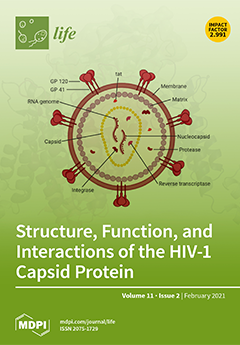
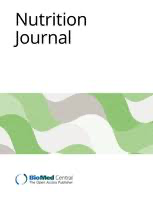

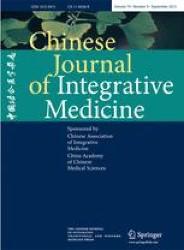
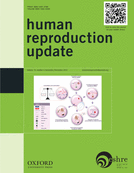
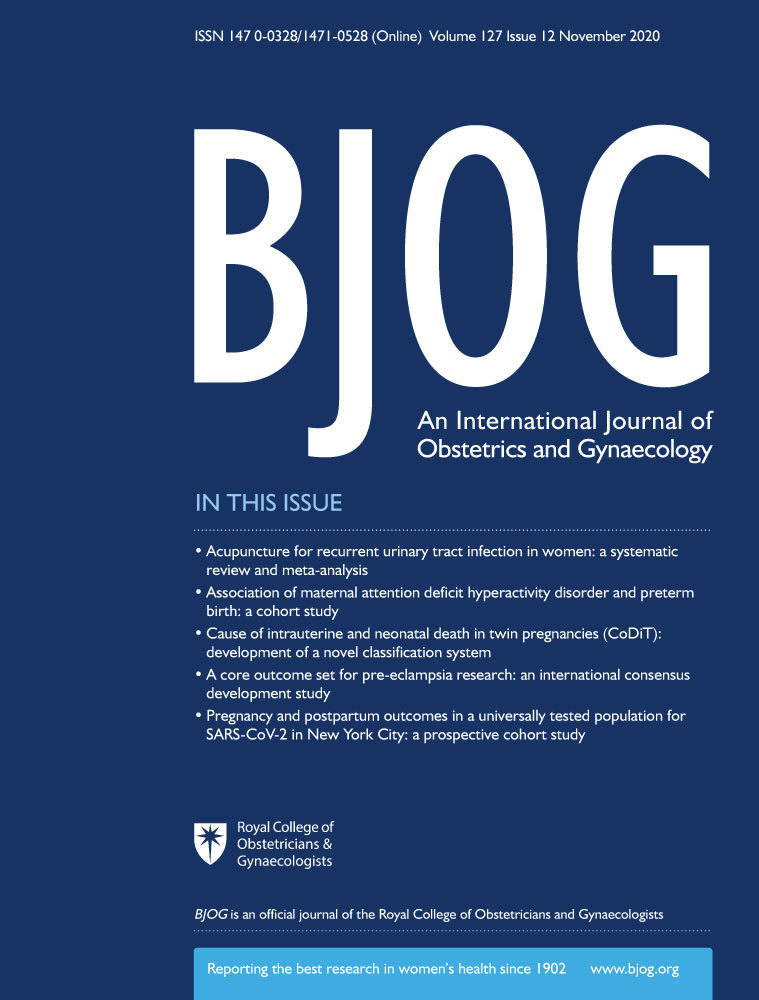
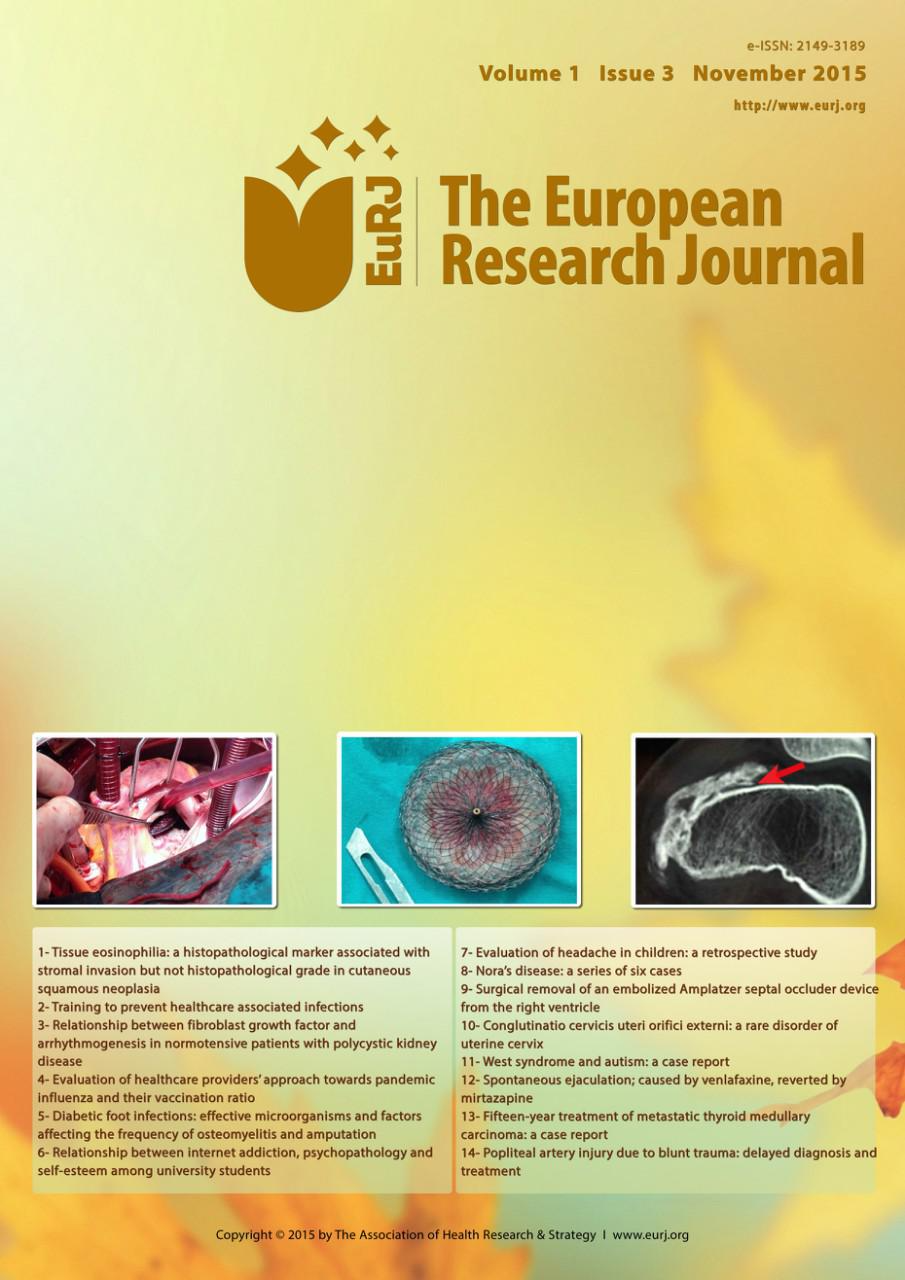
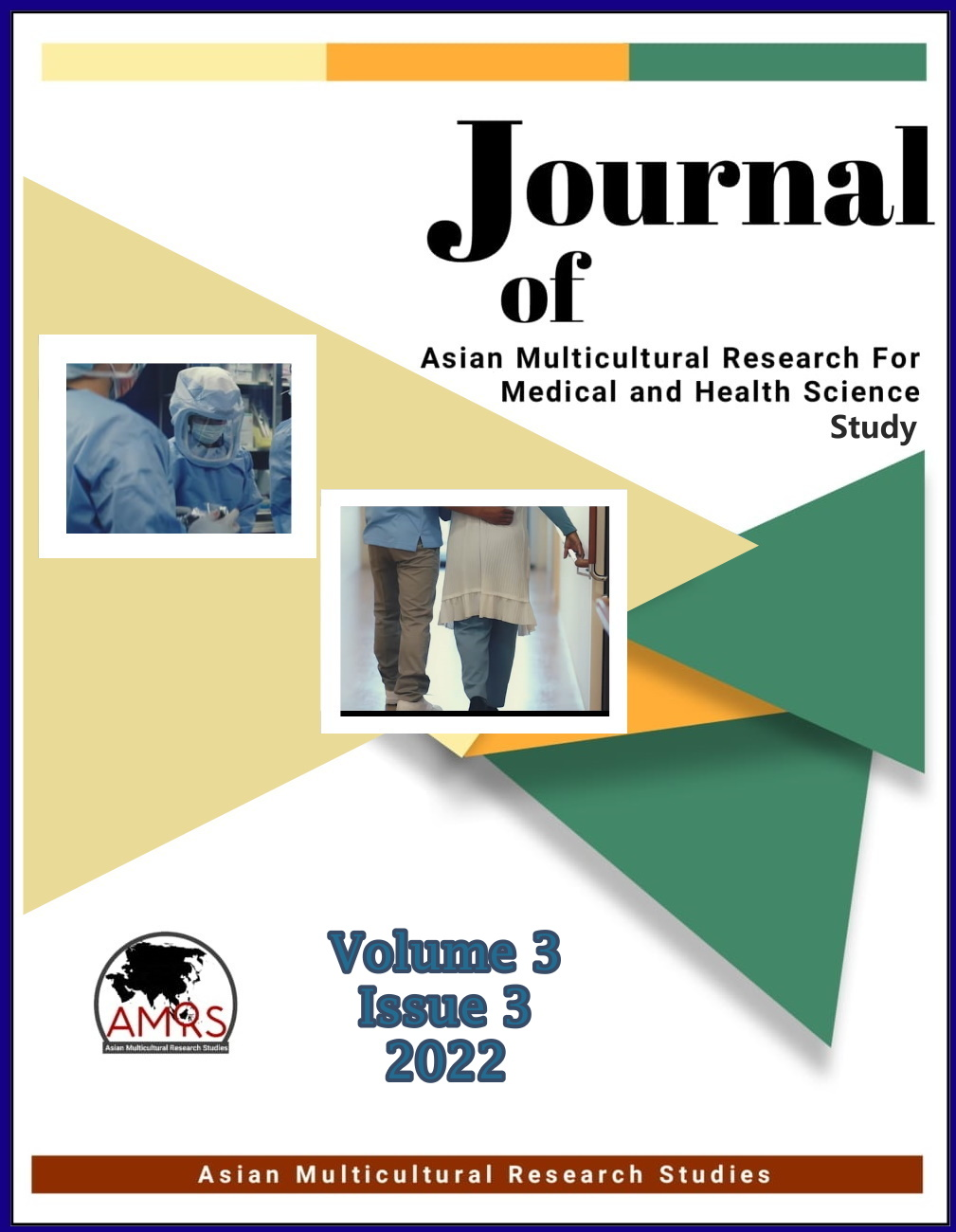
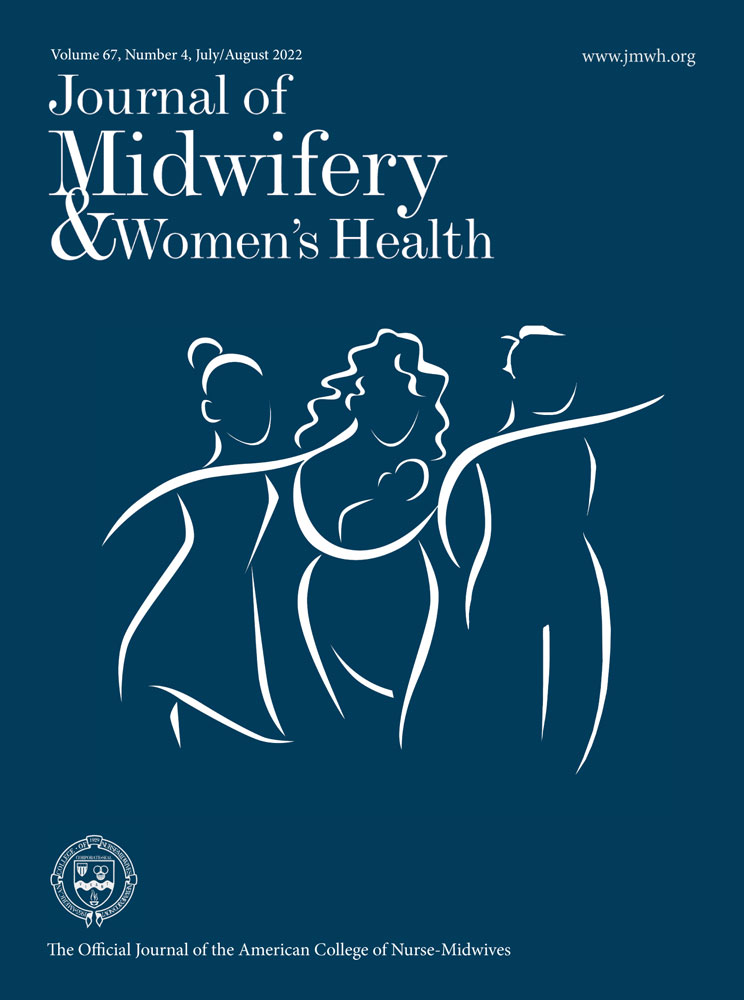
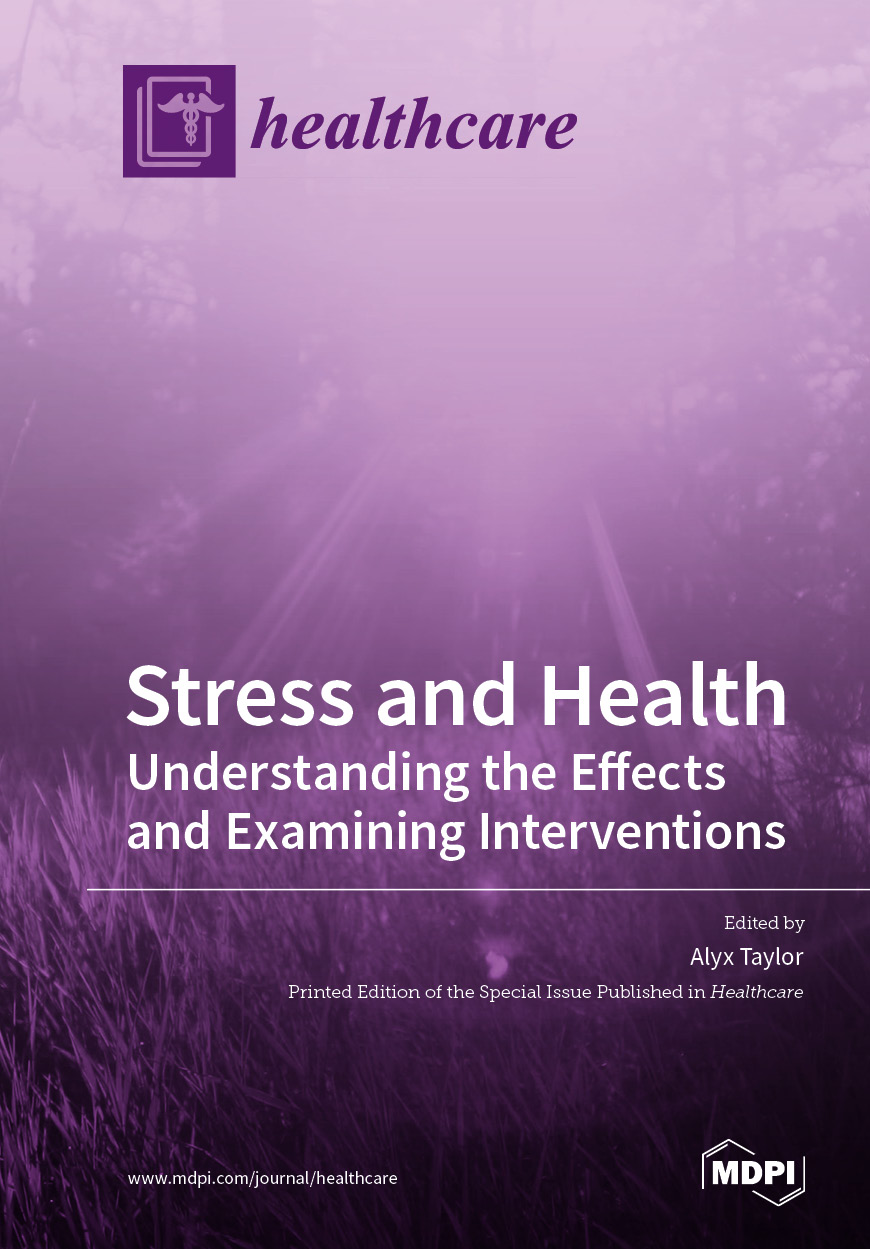
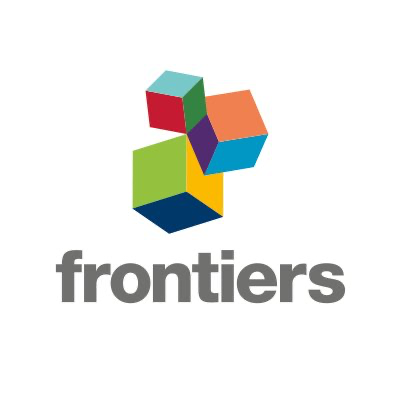



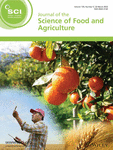
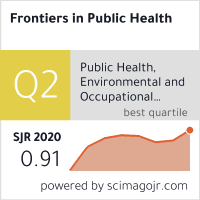
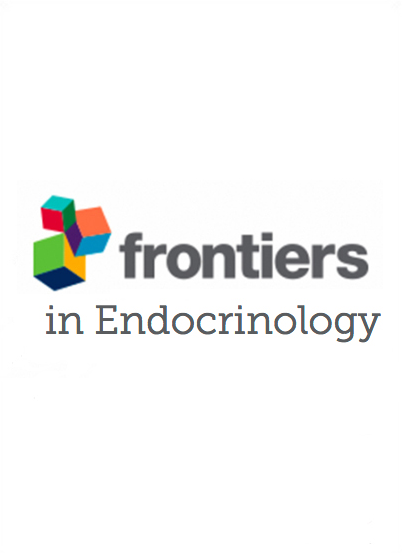


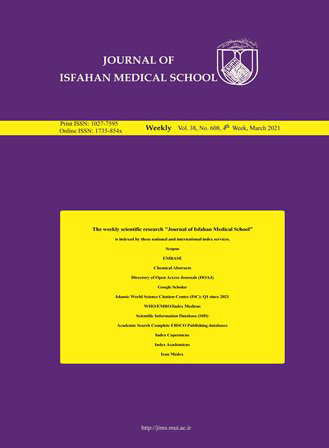


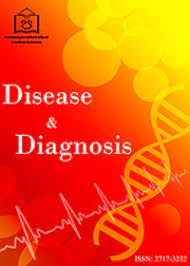
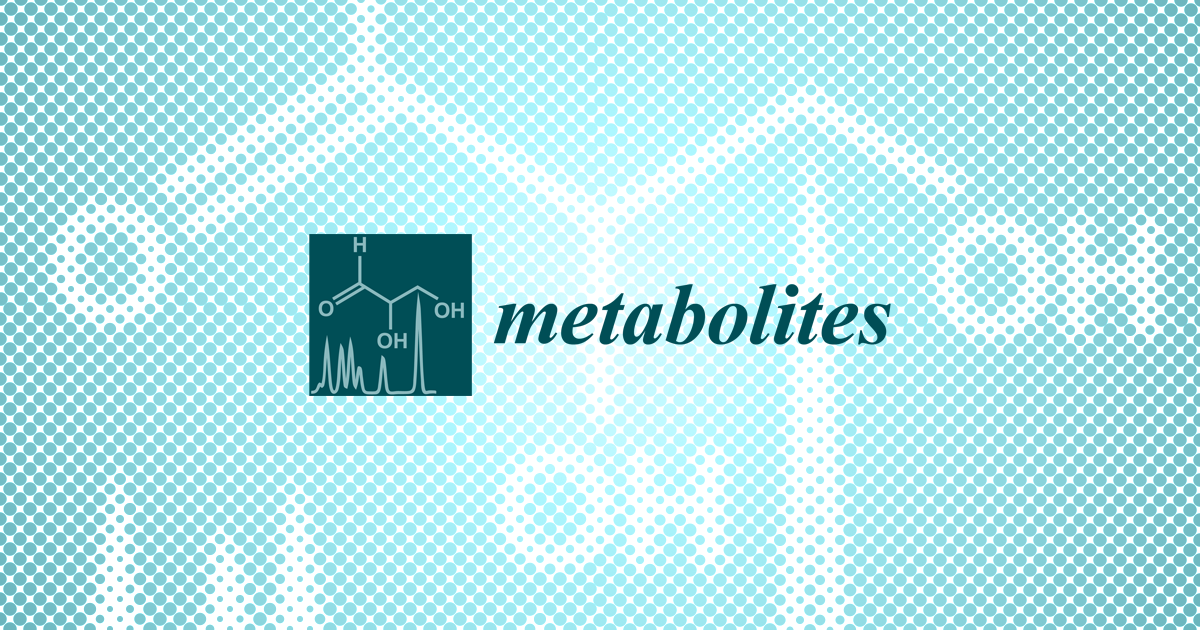

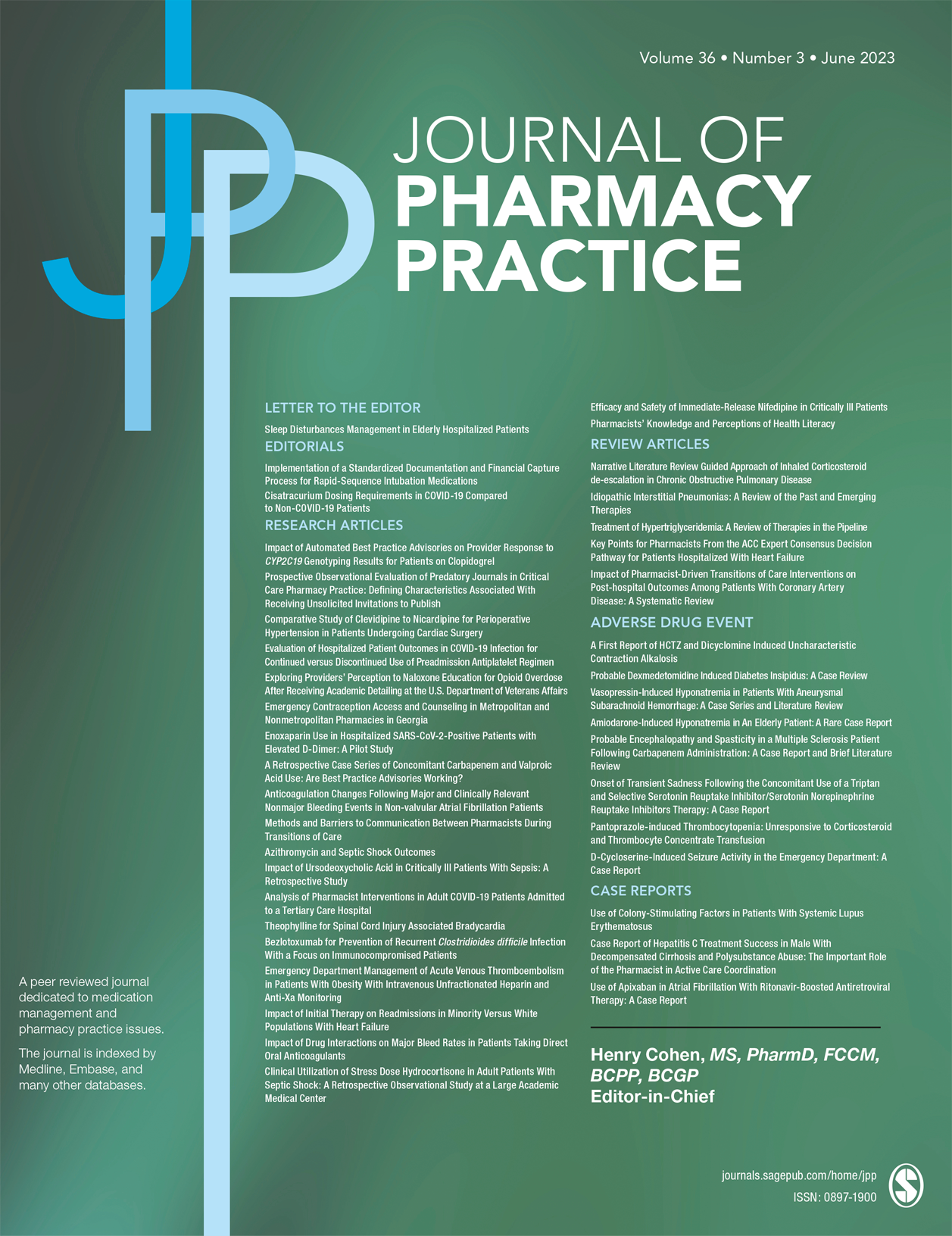
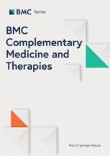
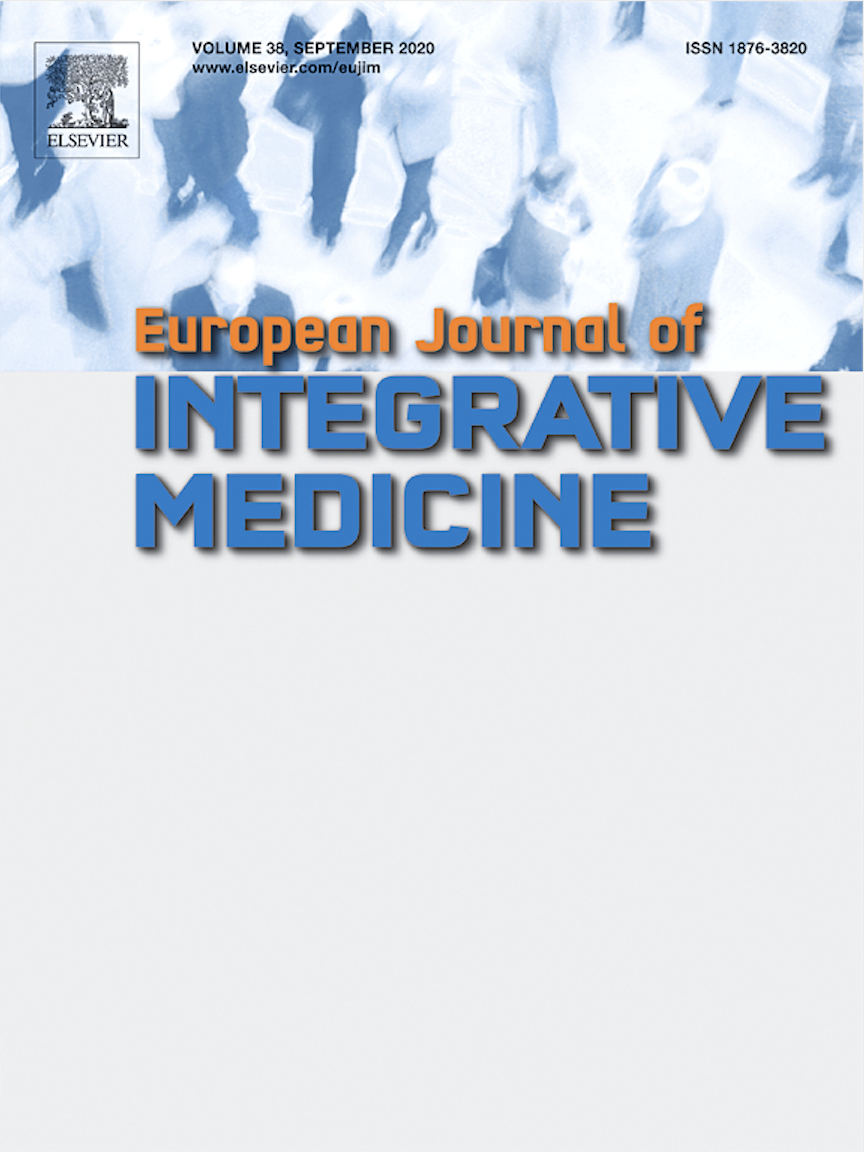
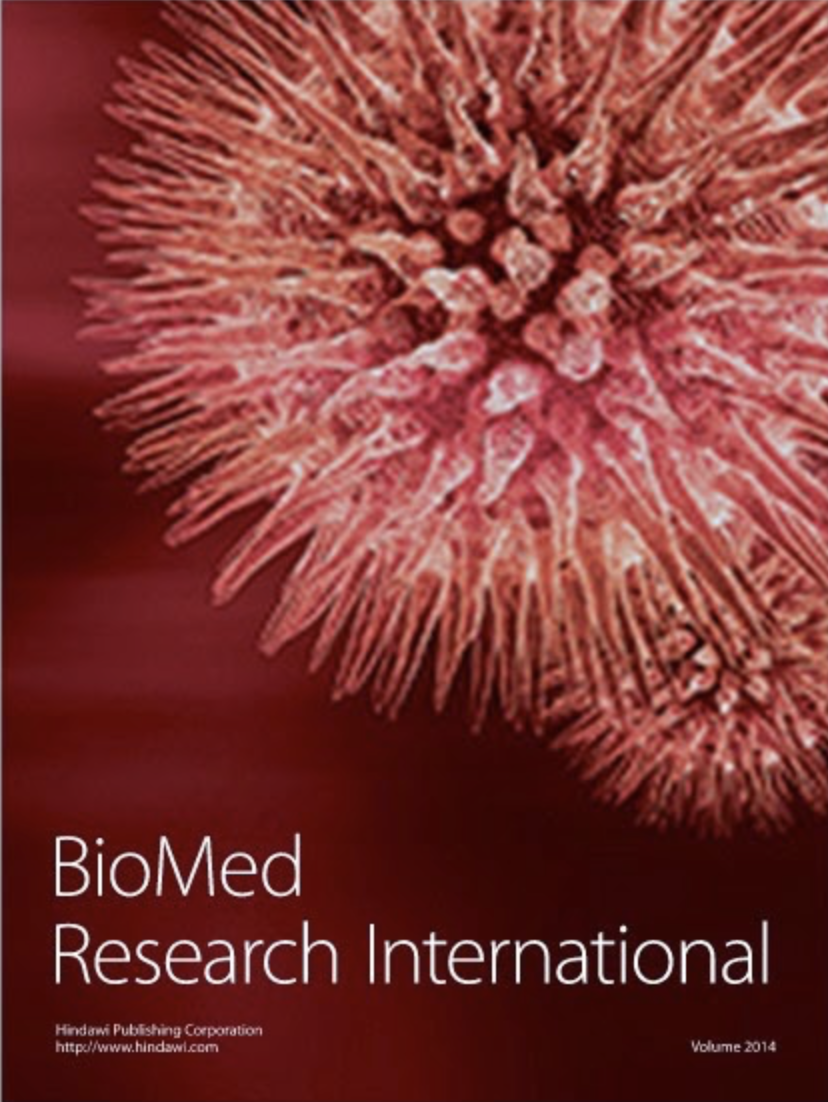
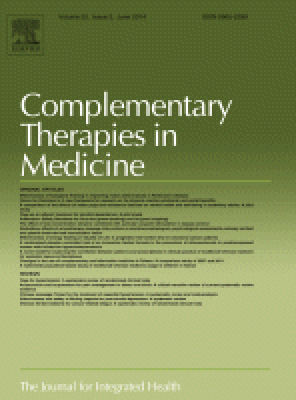
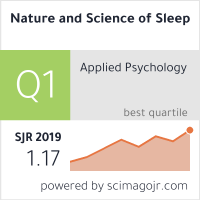
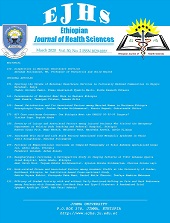

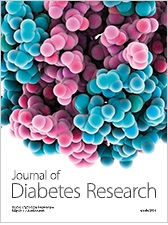
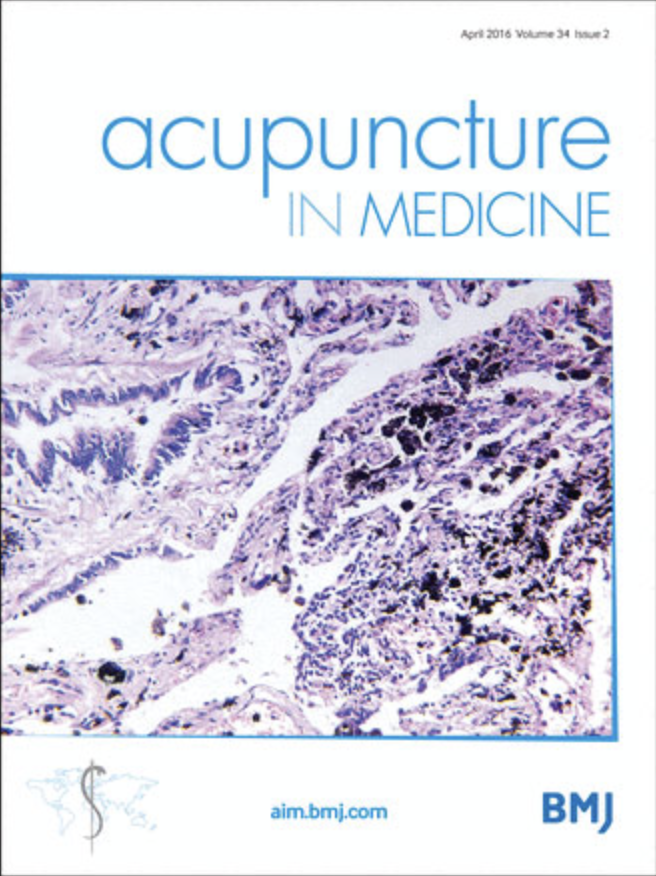
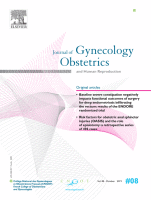
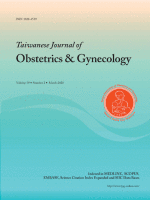
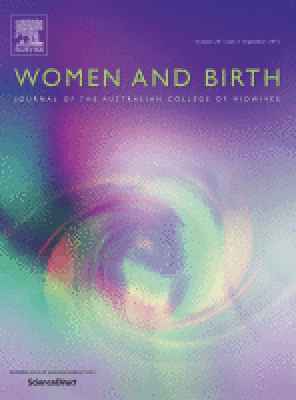
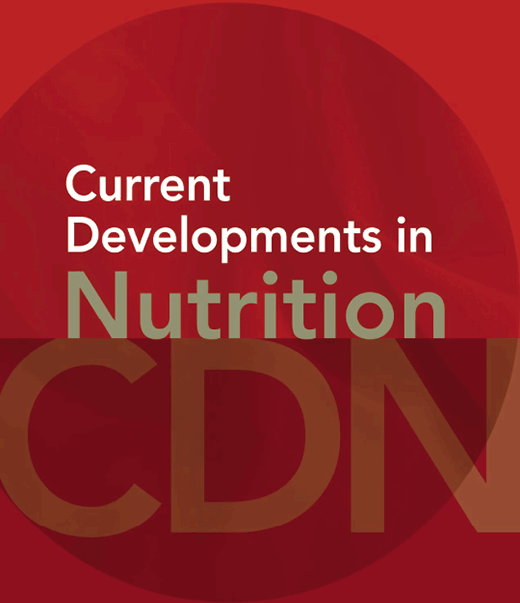

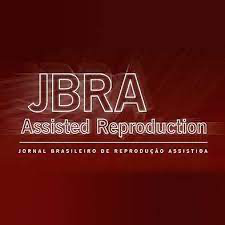
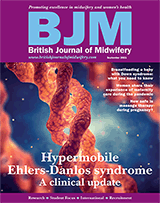
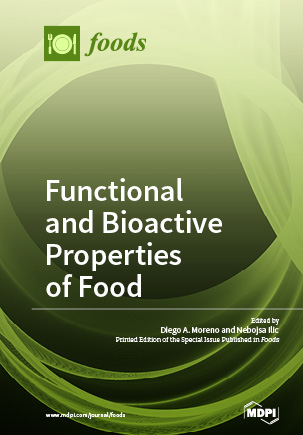
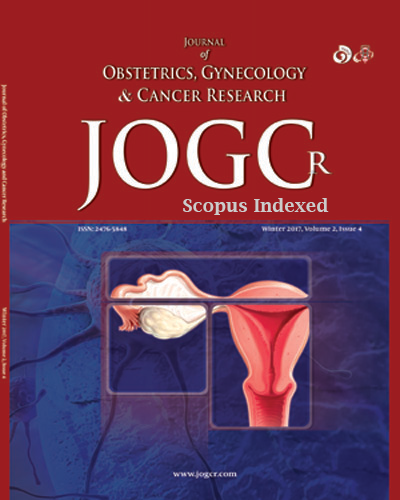

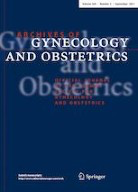
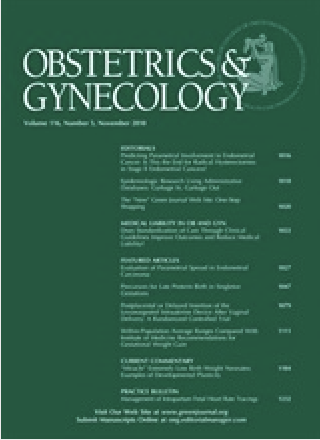
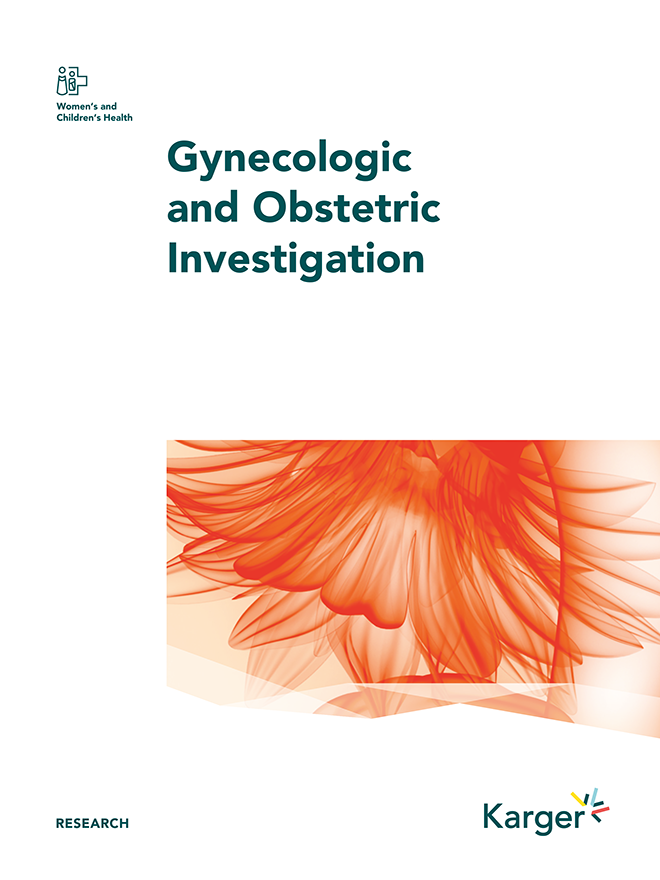
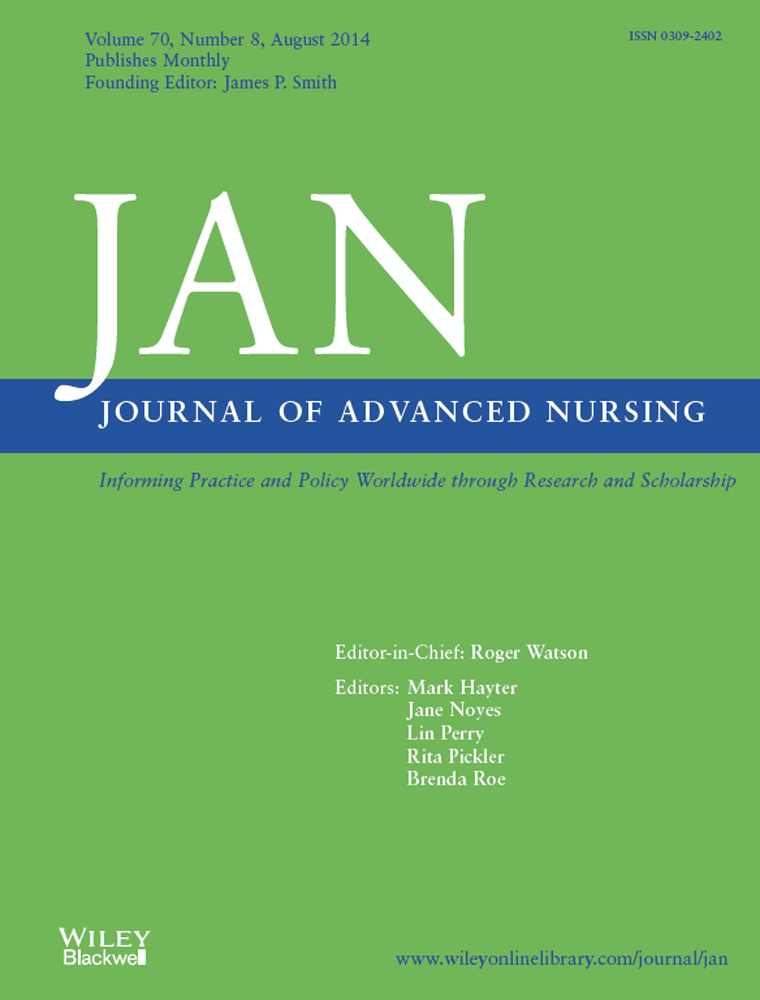
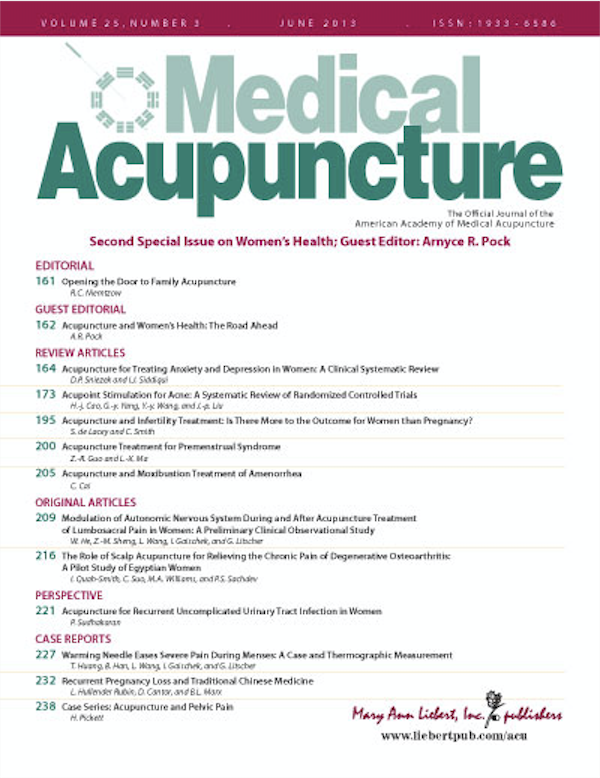
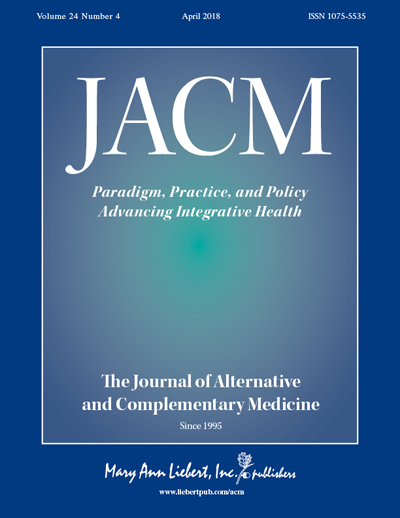

Review(s) Completed, Editorial Evaluation Pending, as of 20 Oct 2021. —Ve-Vinn L 22 Oct 2021